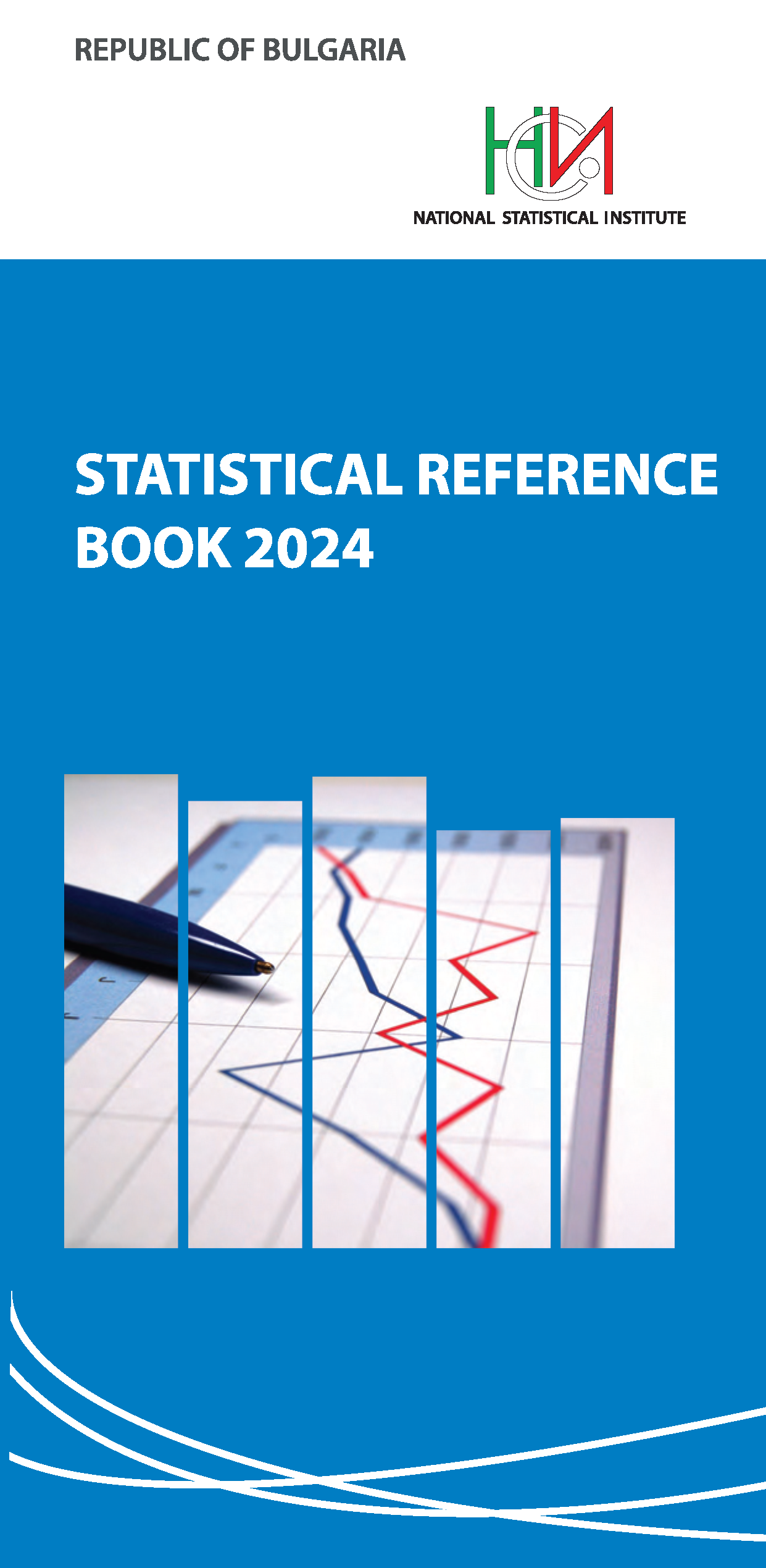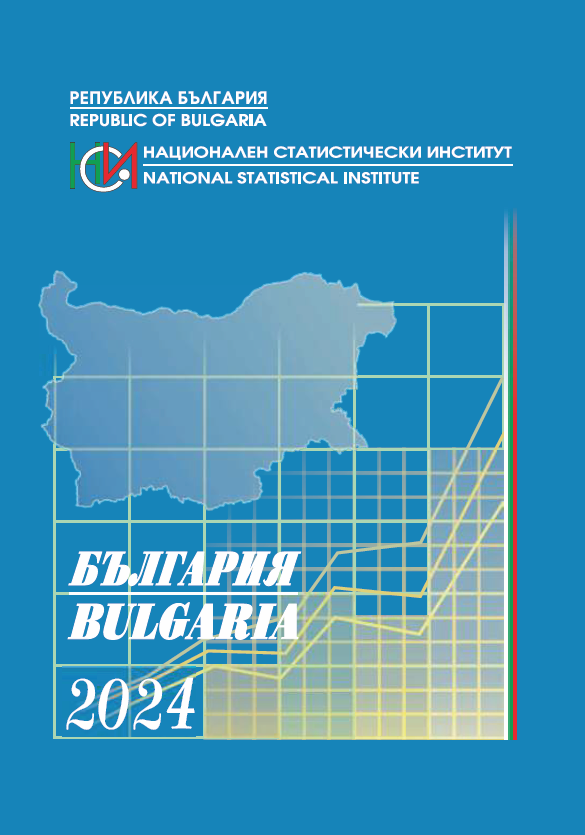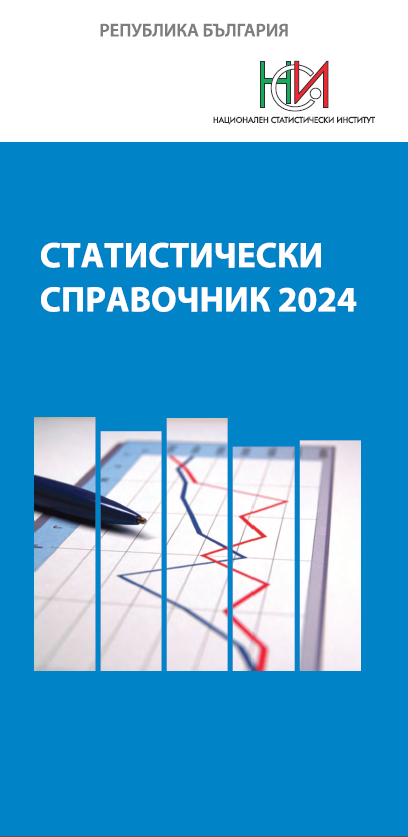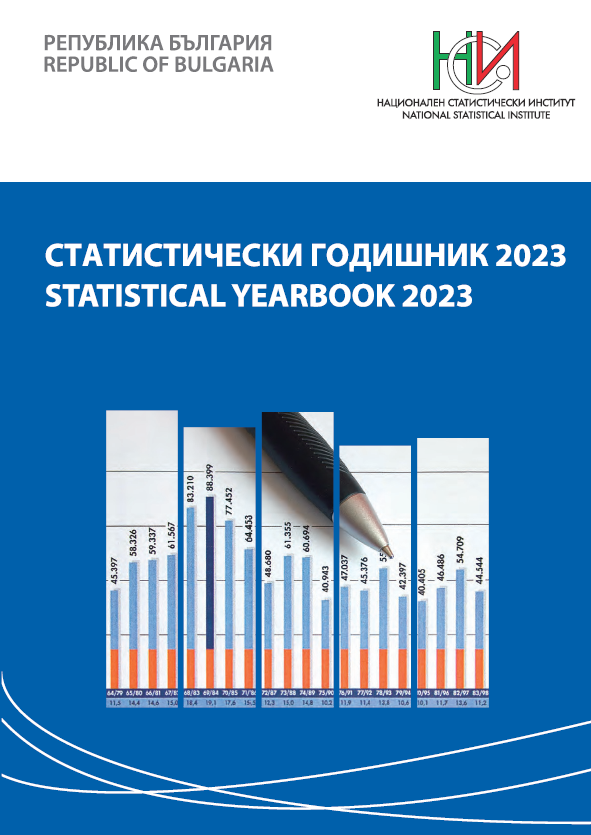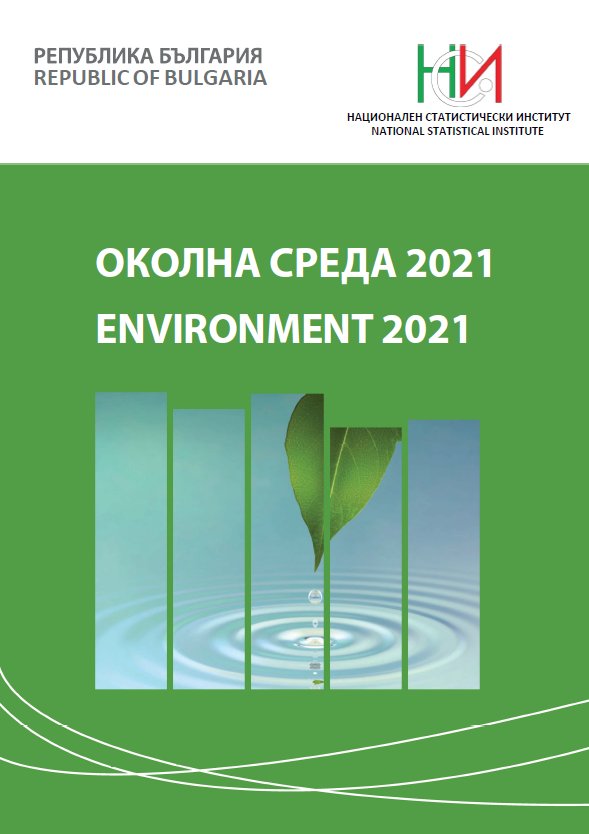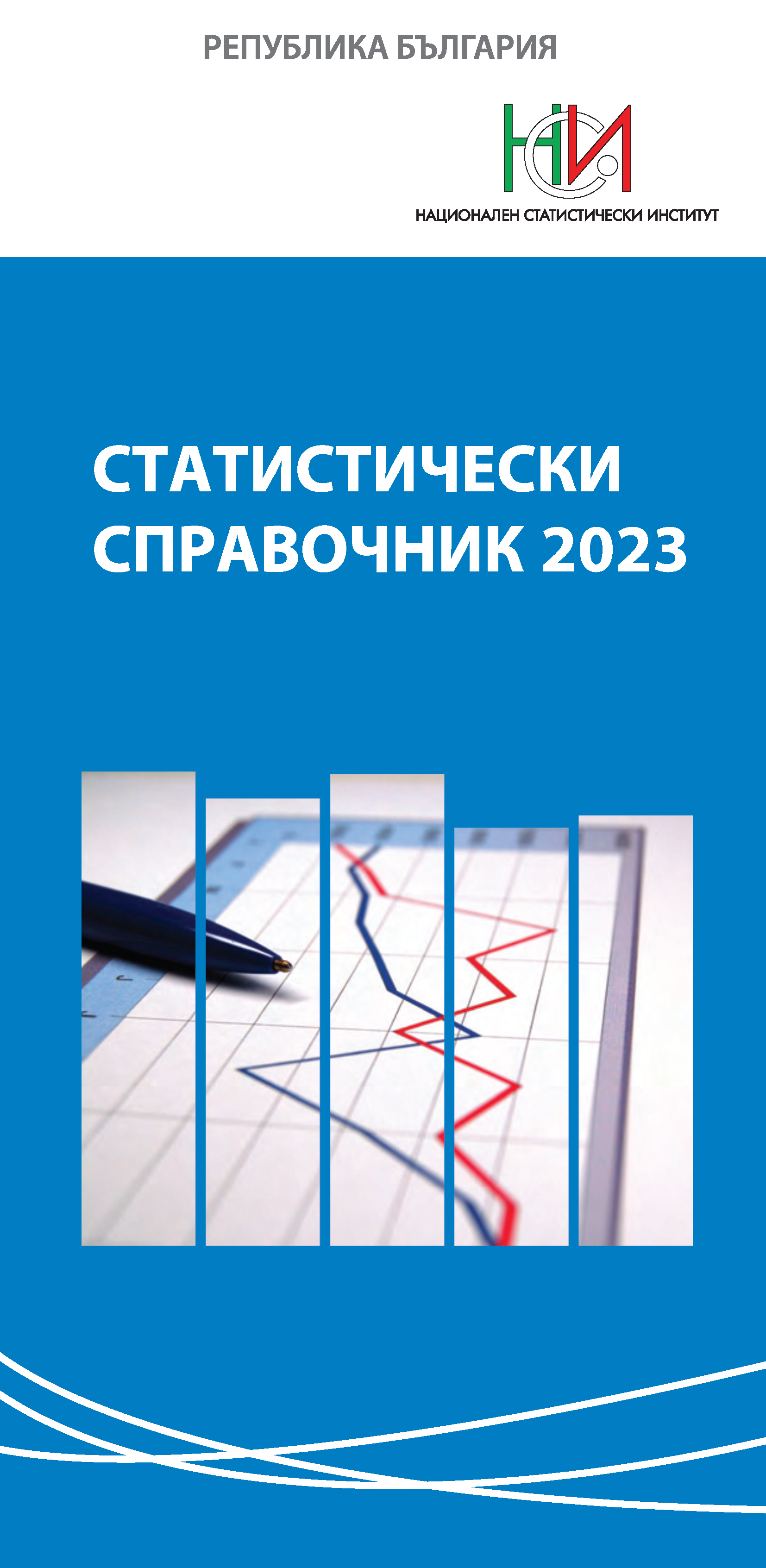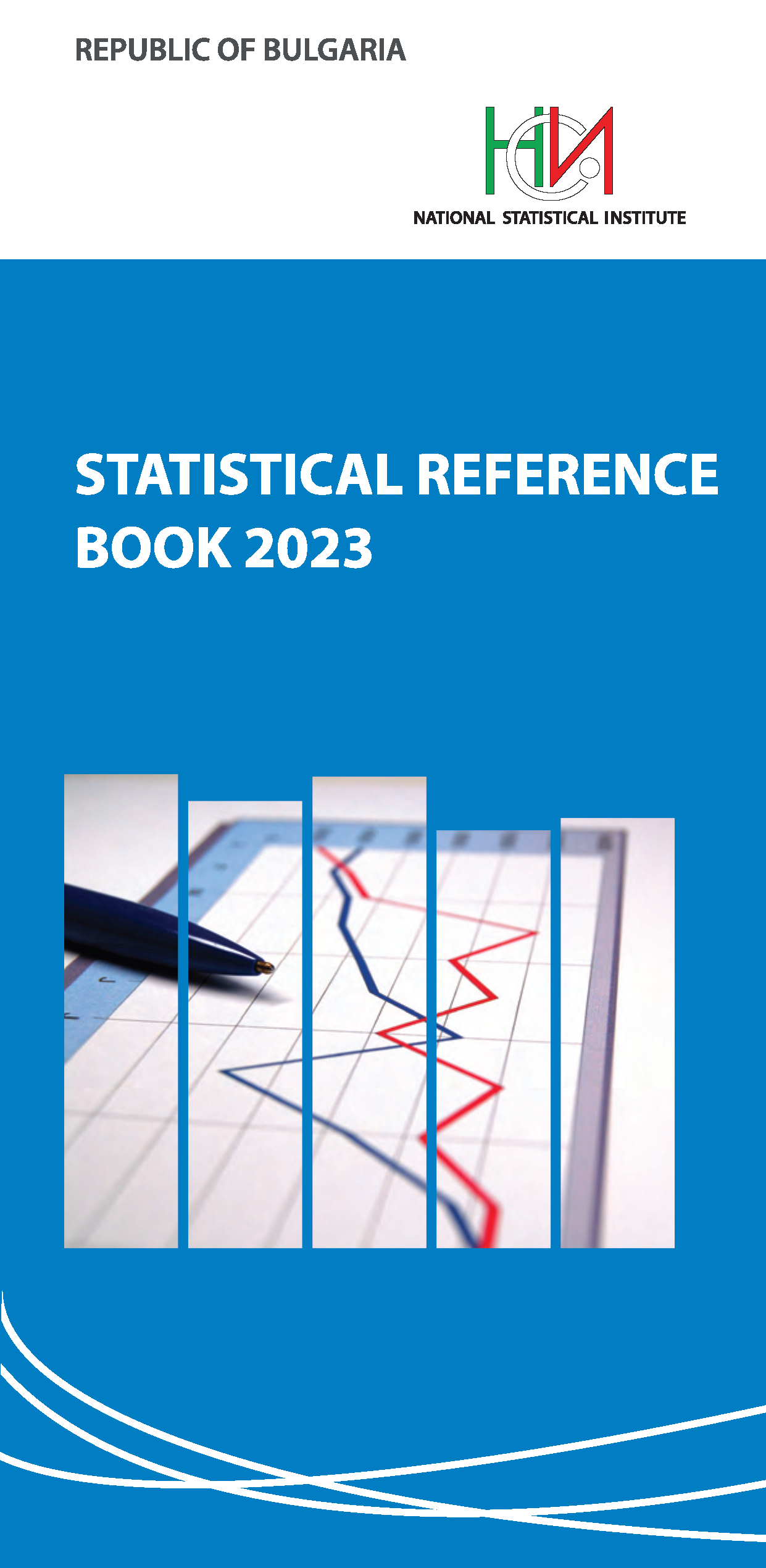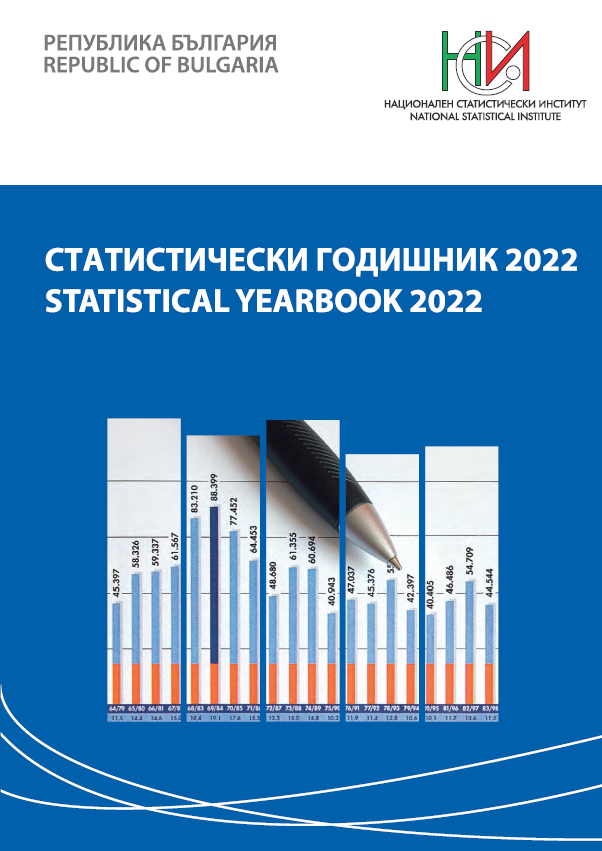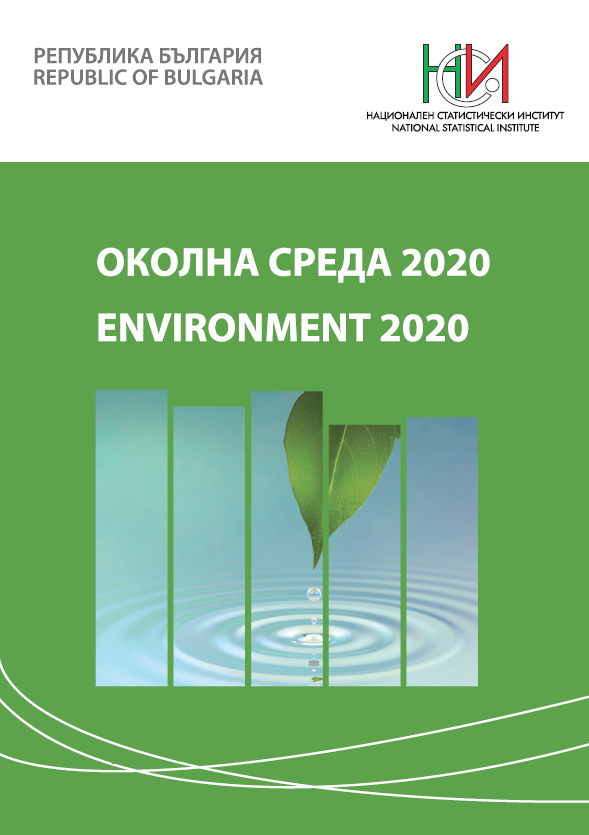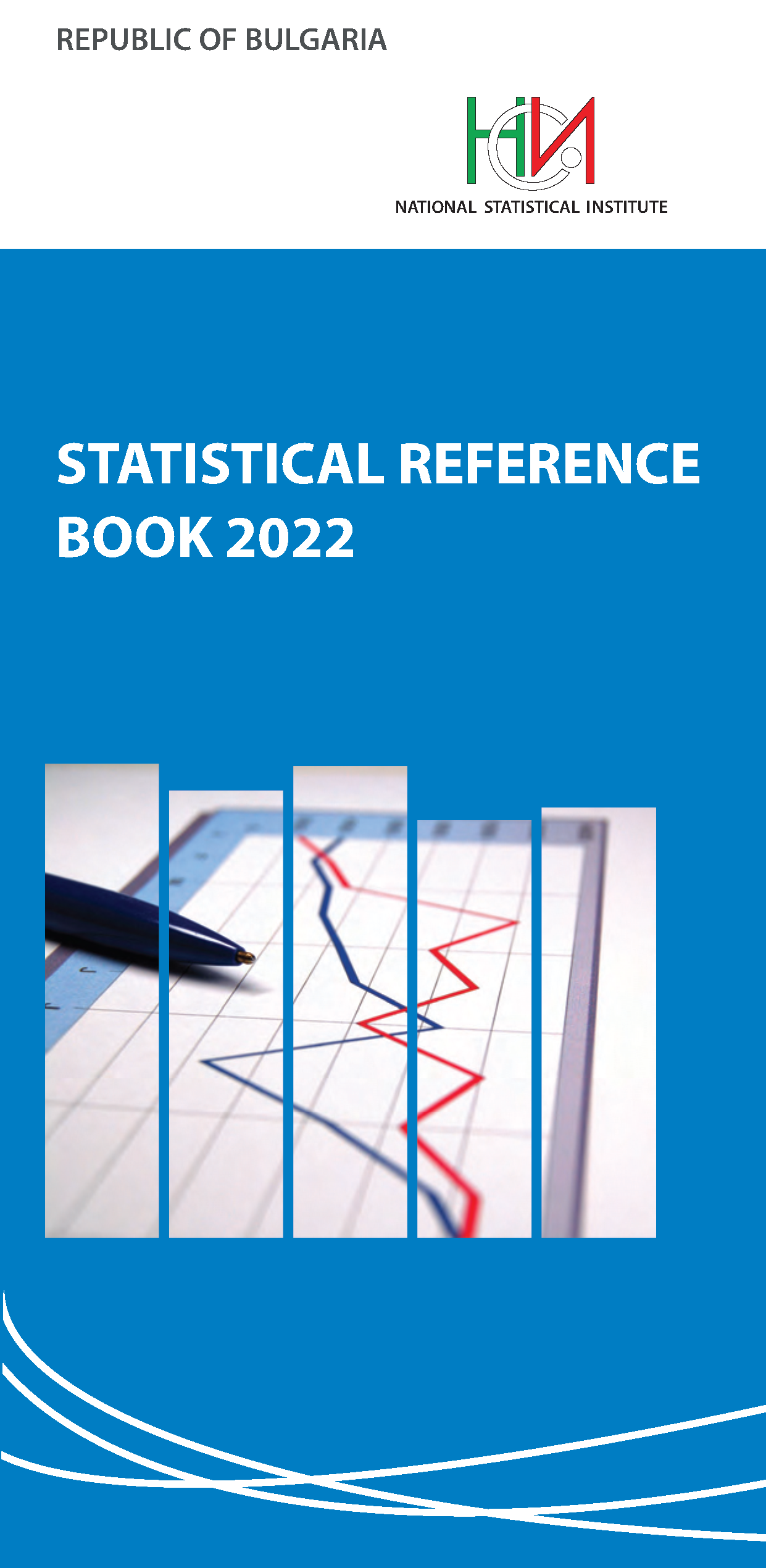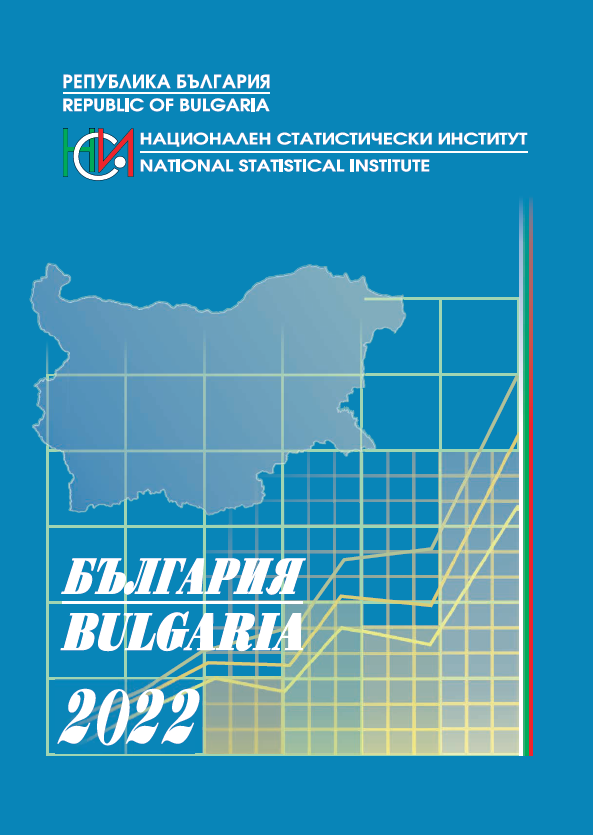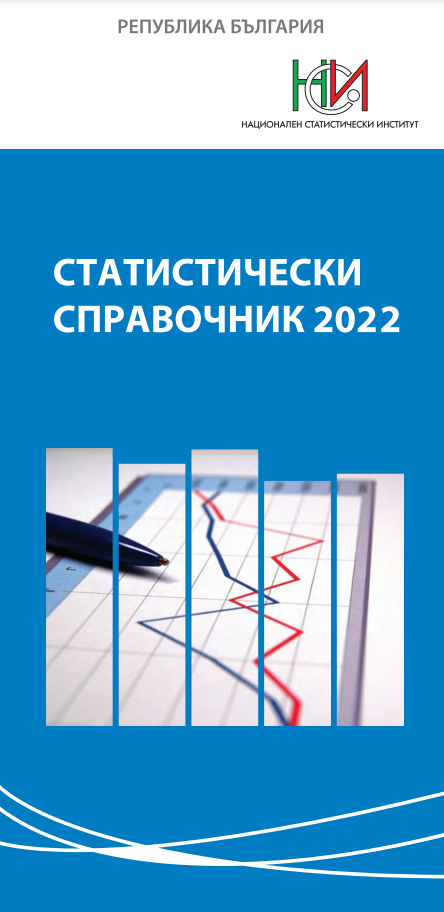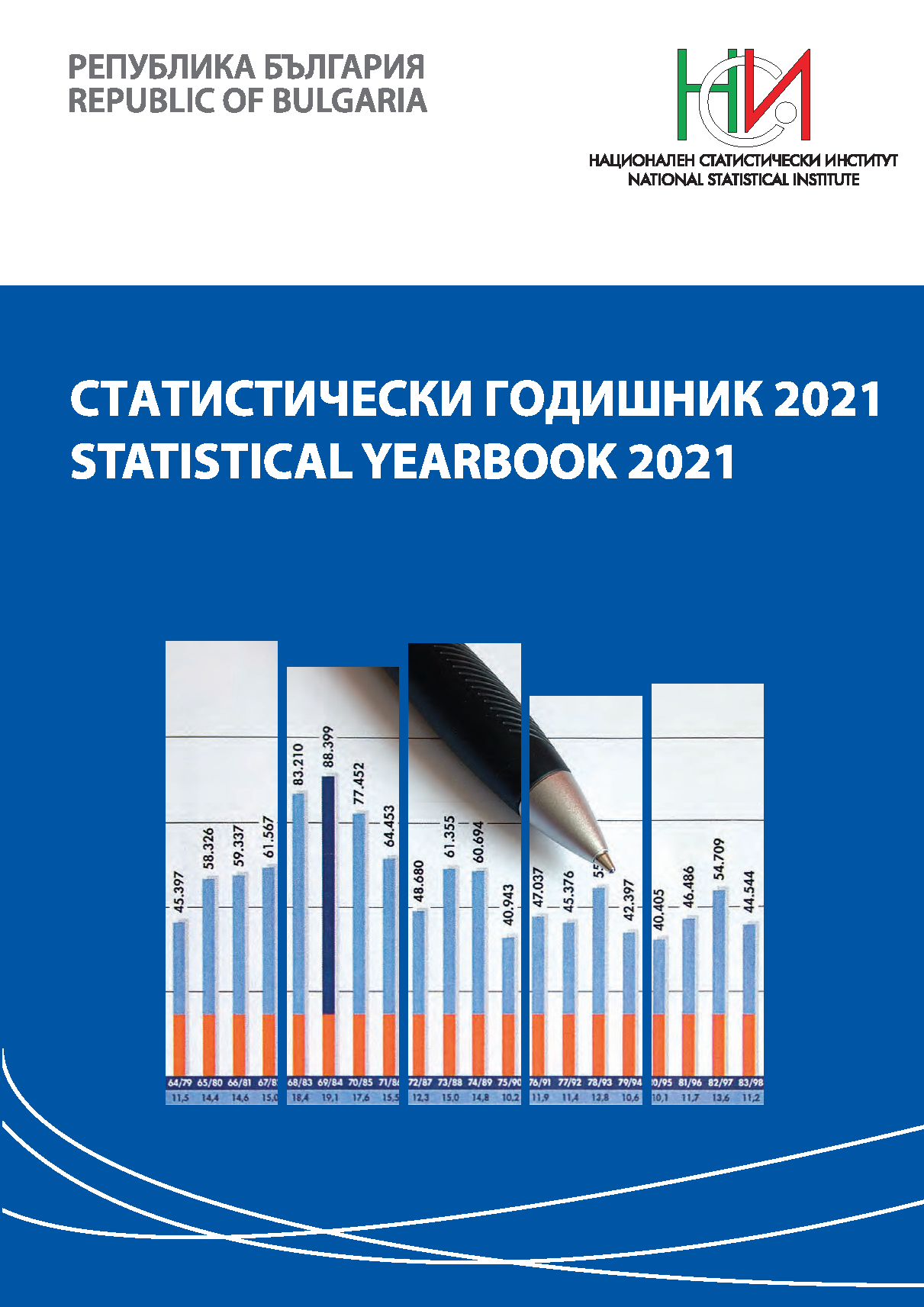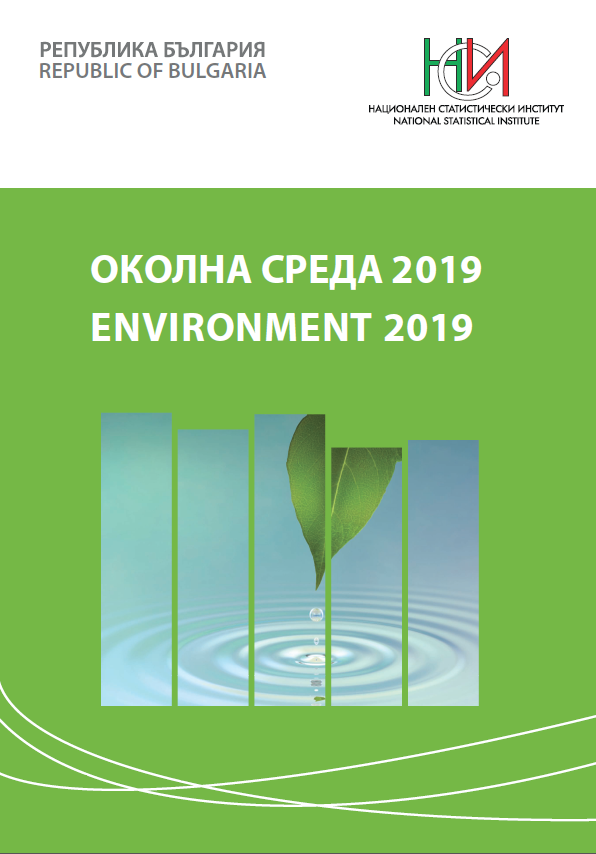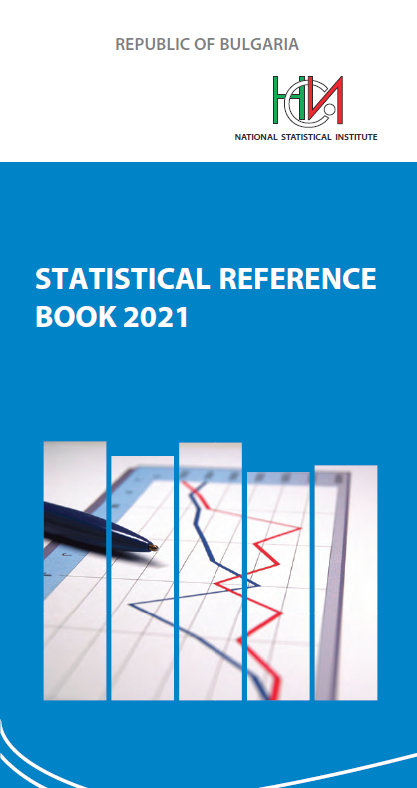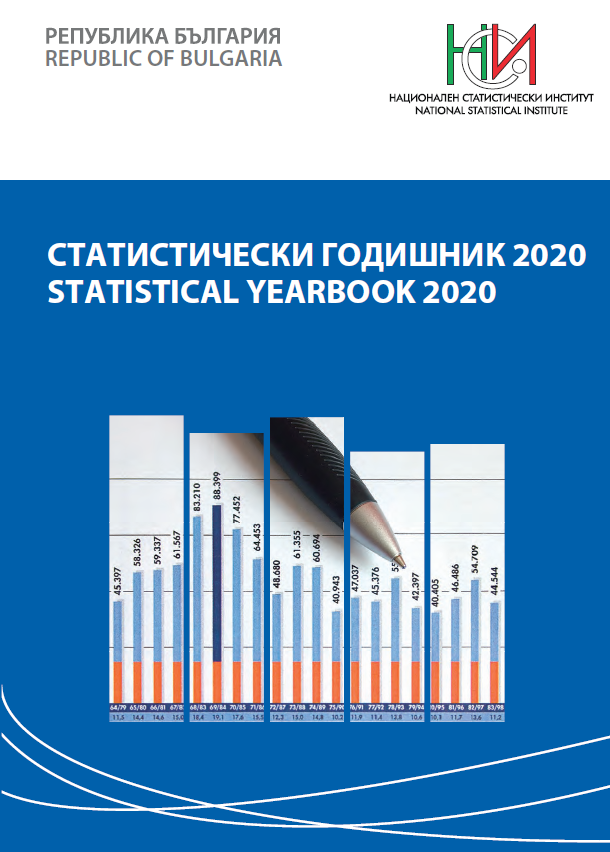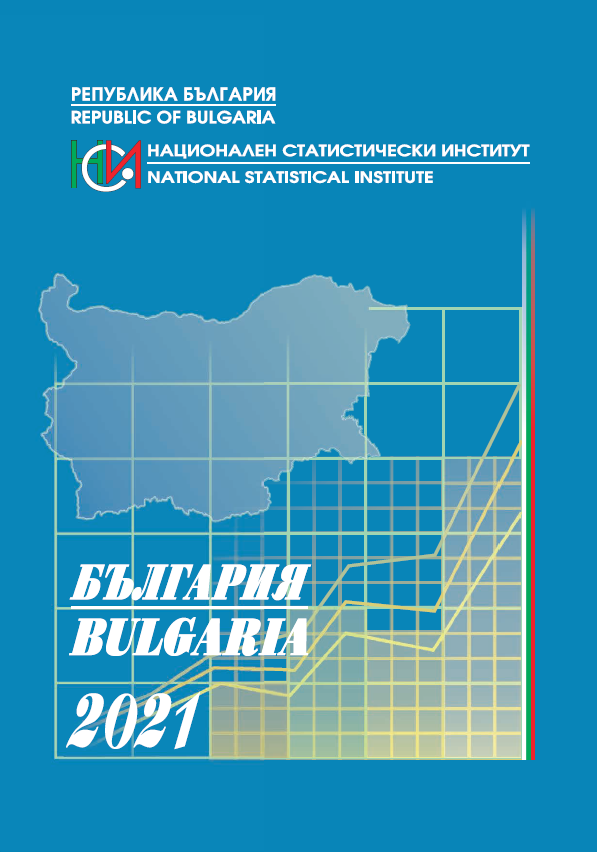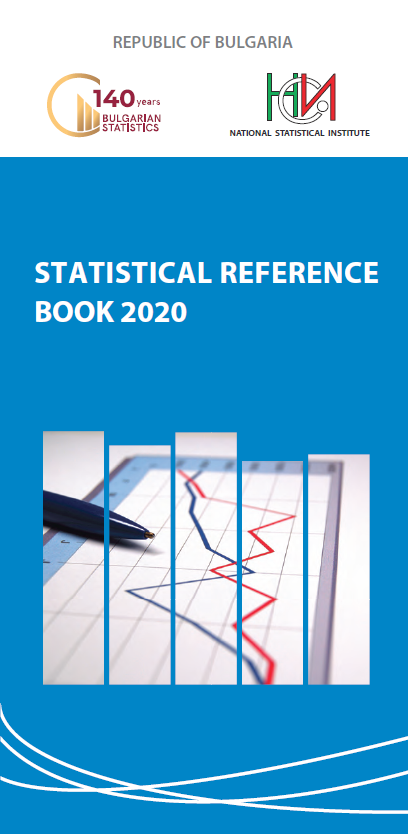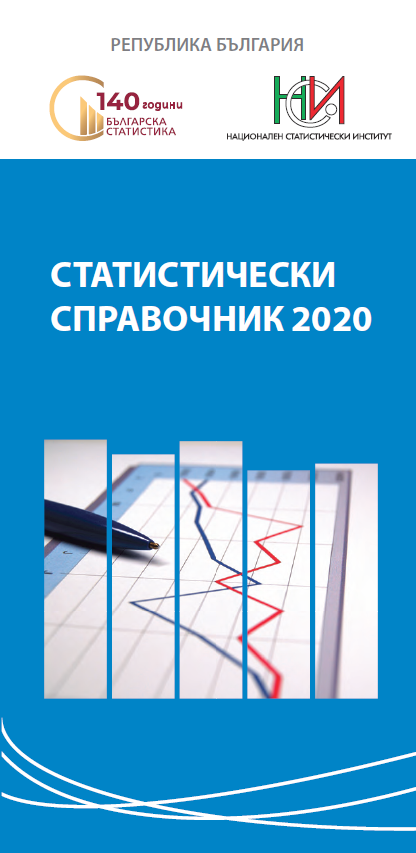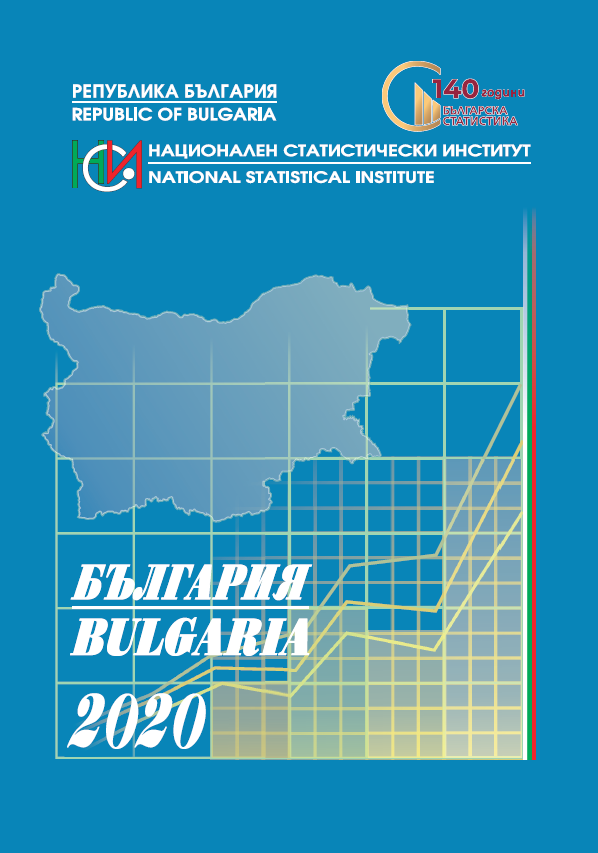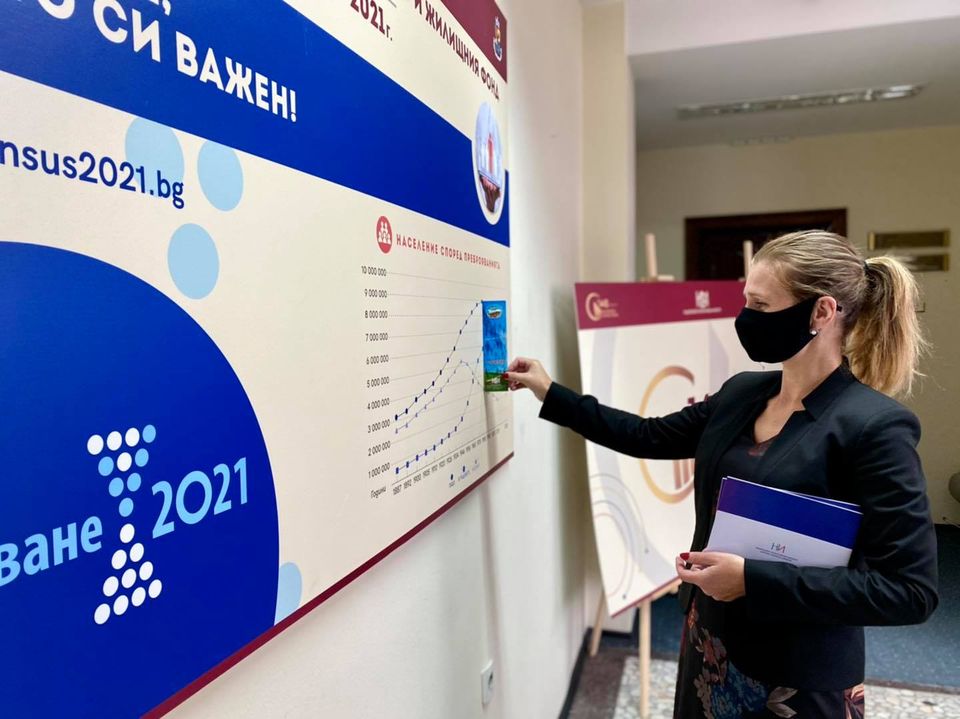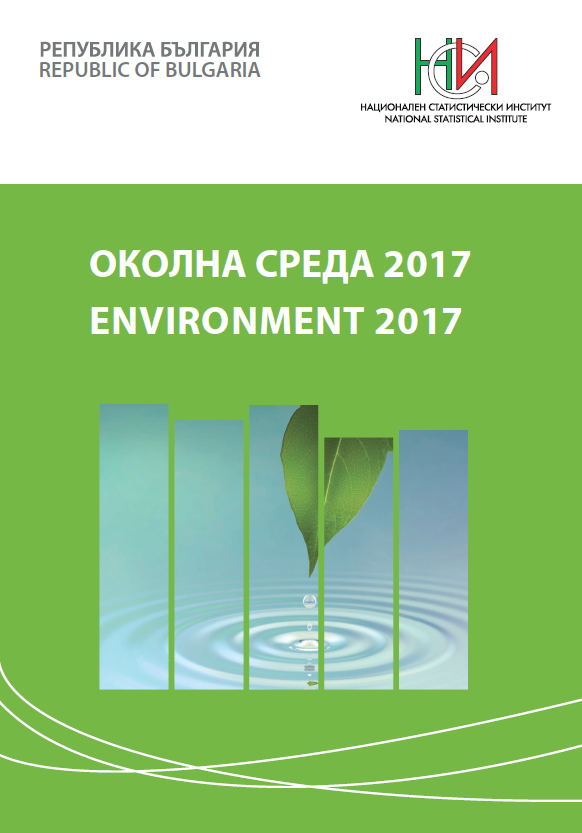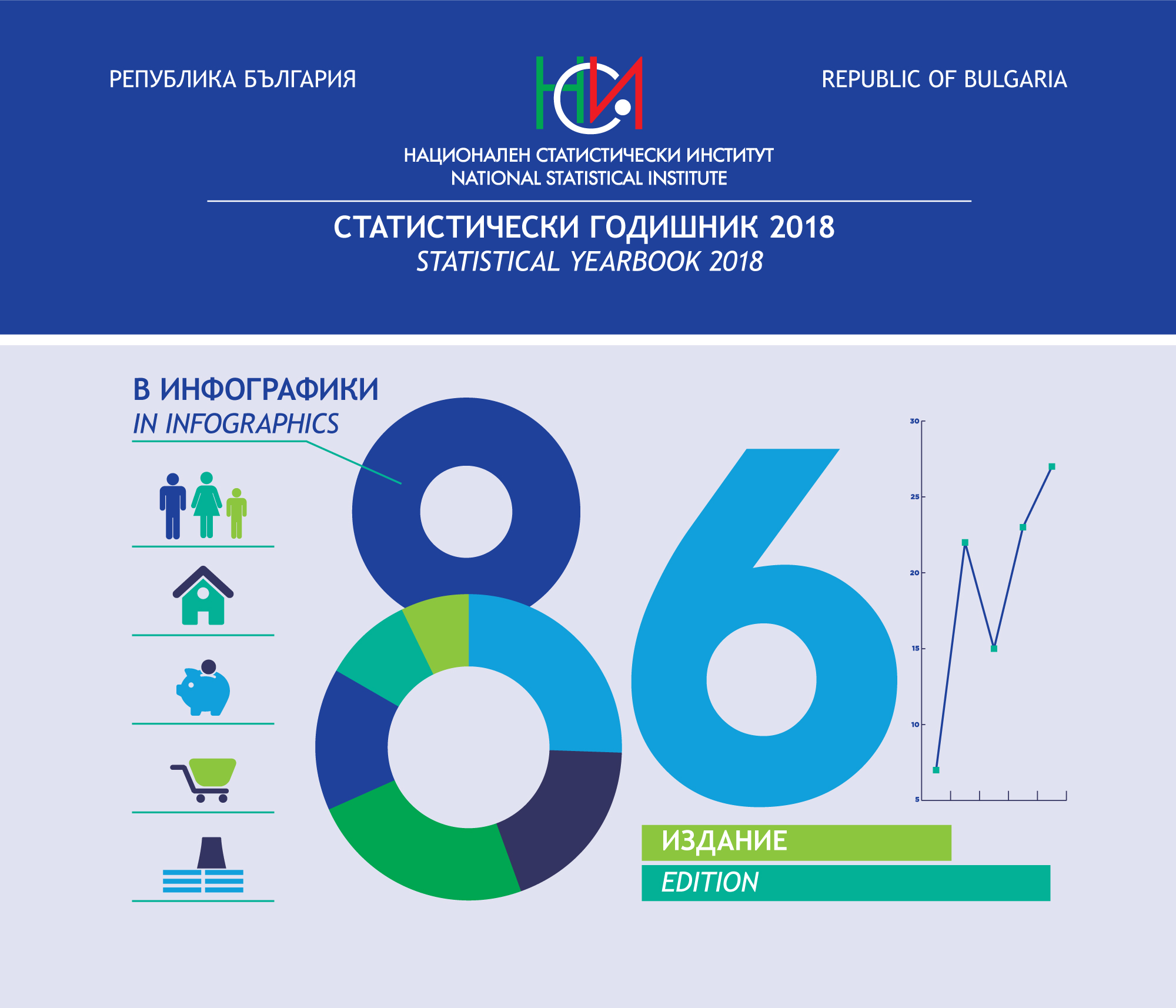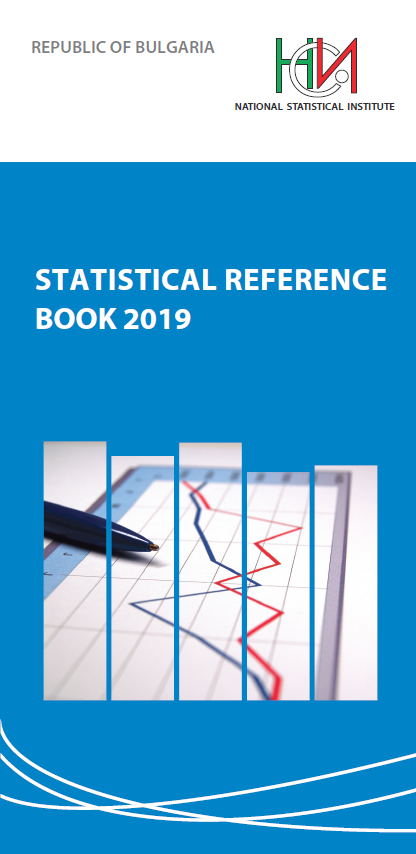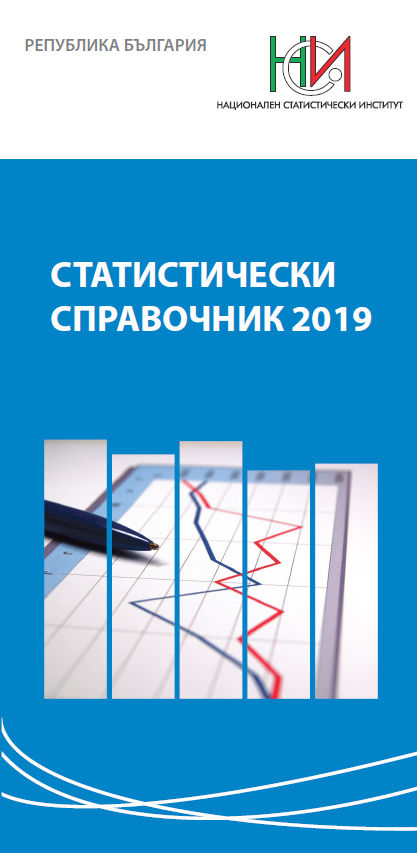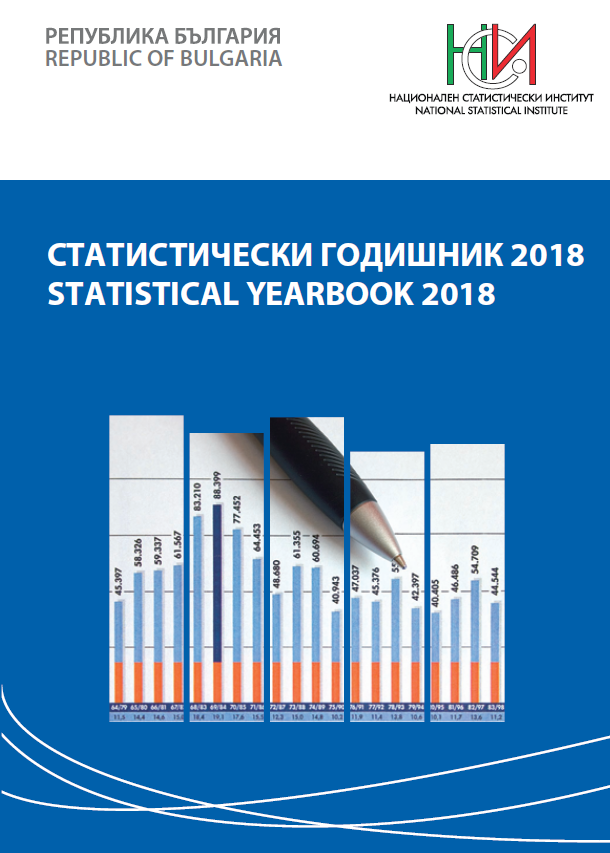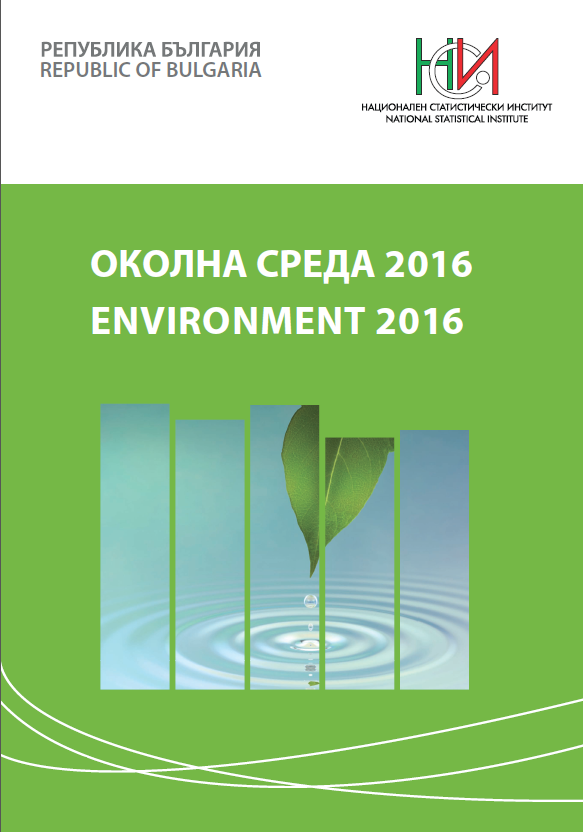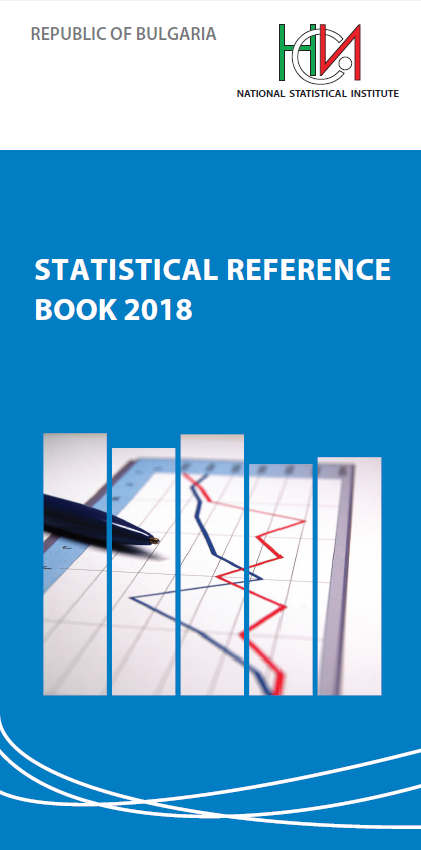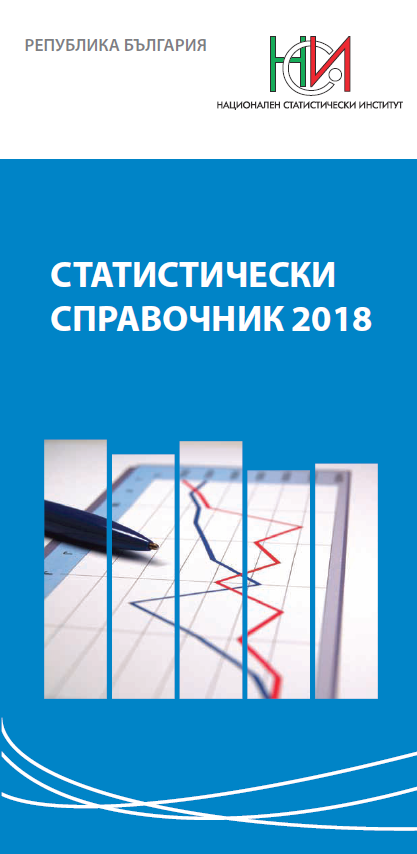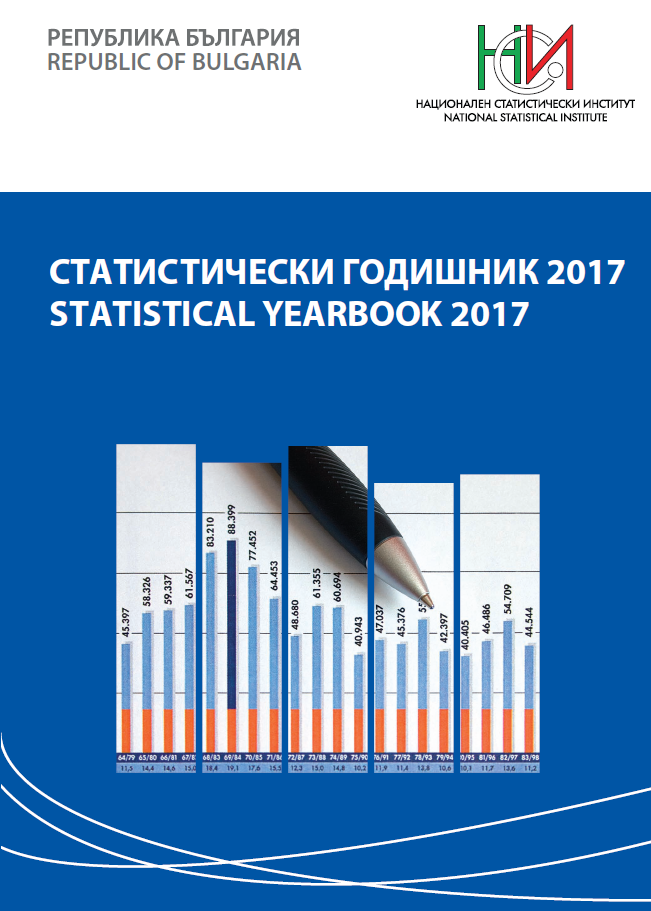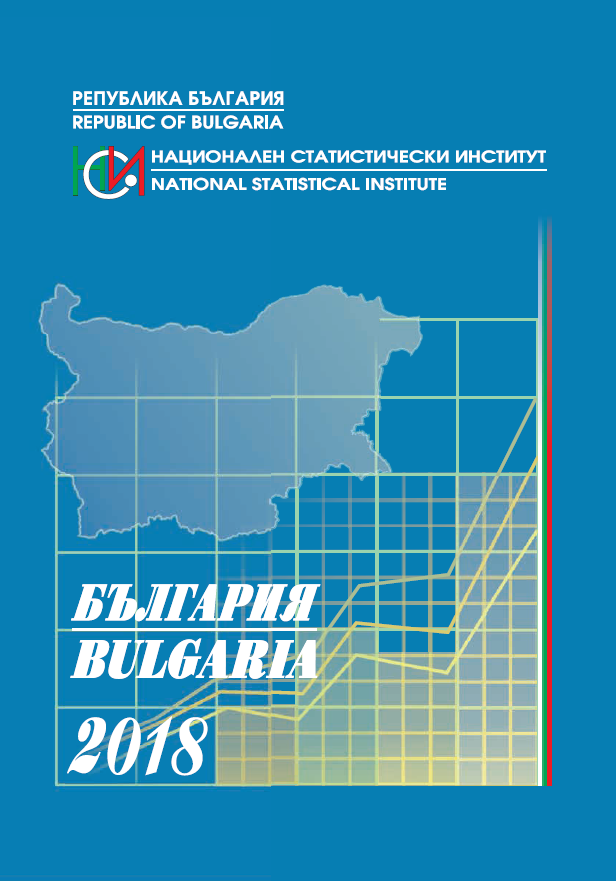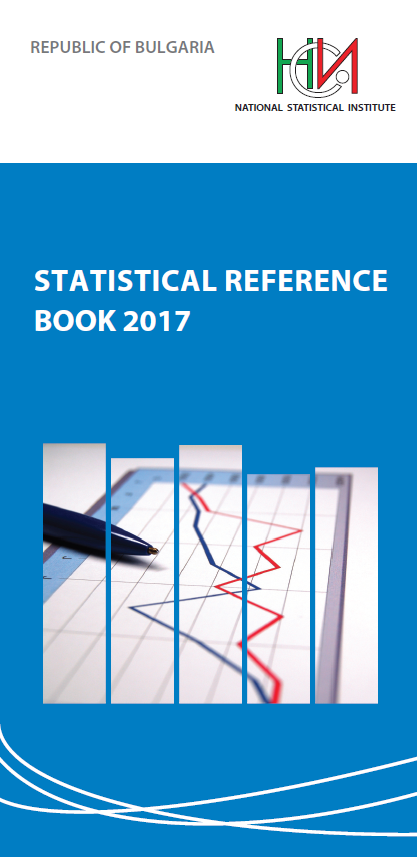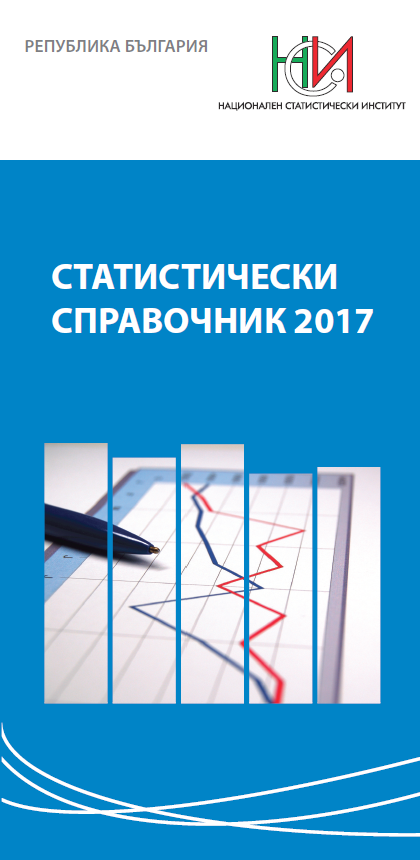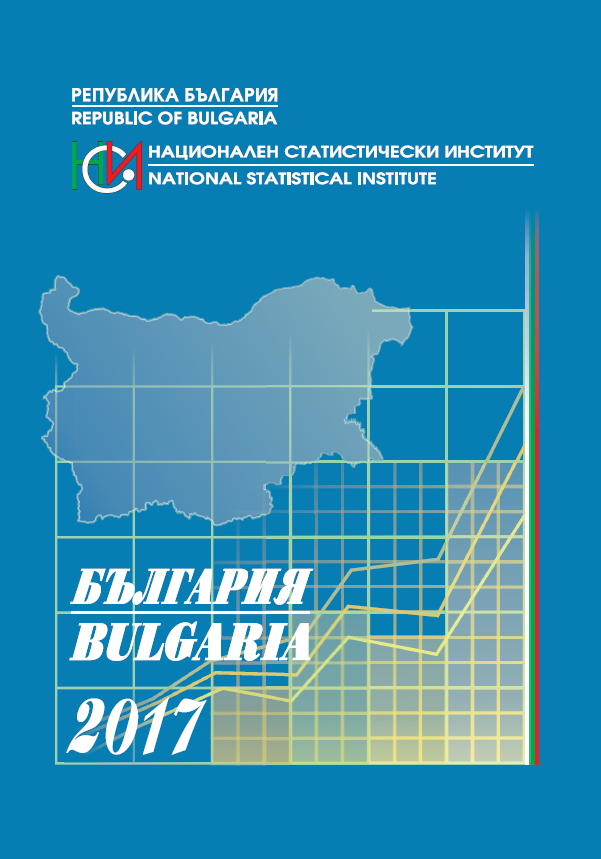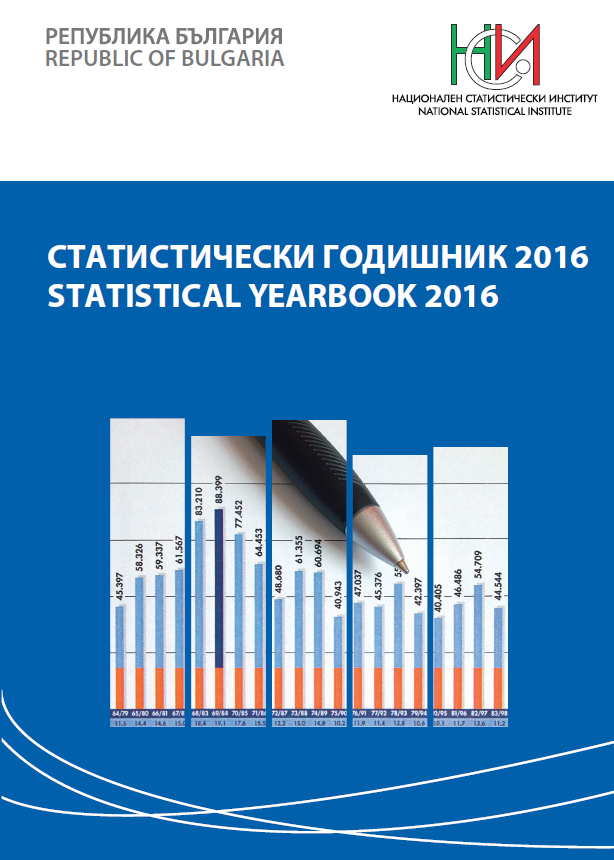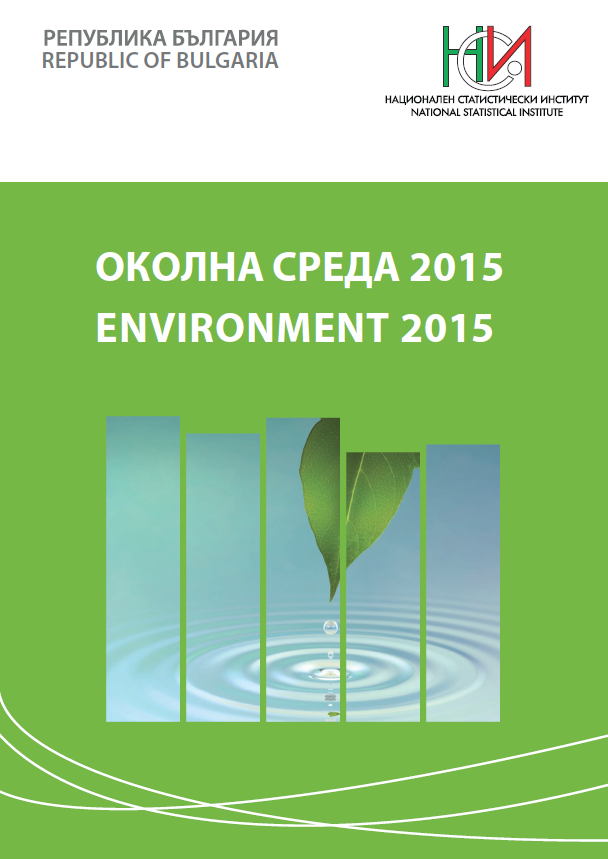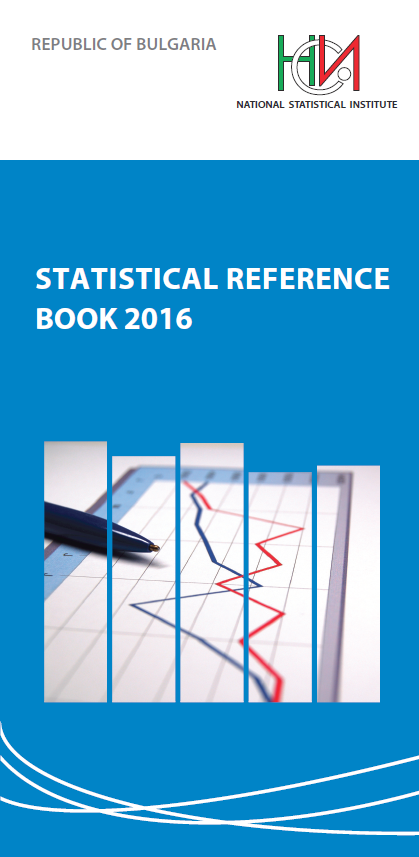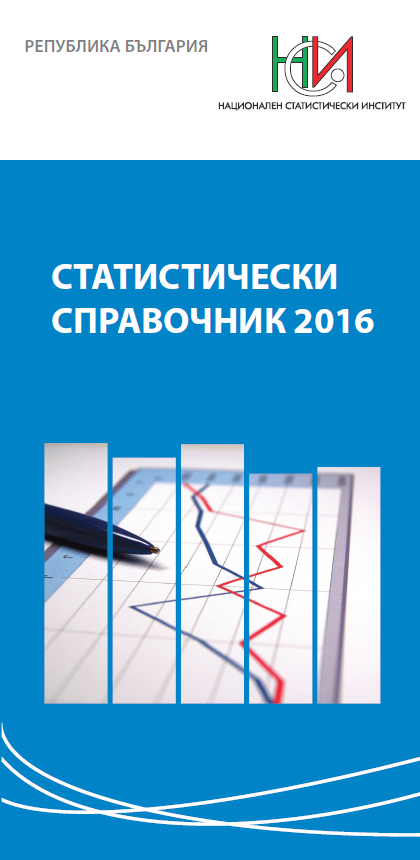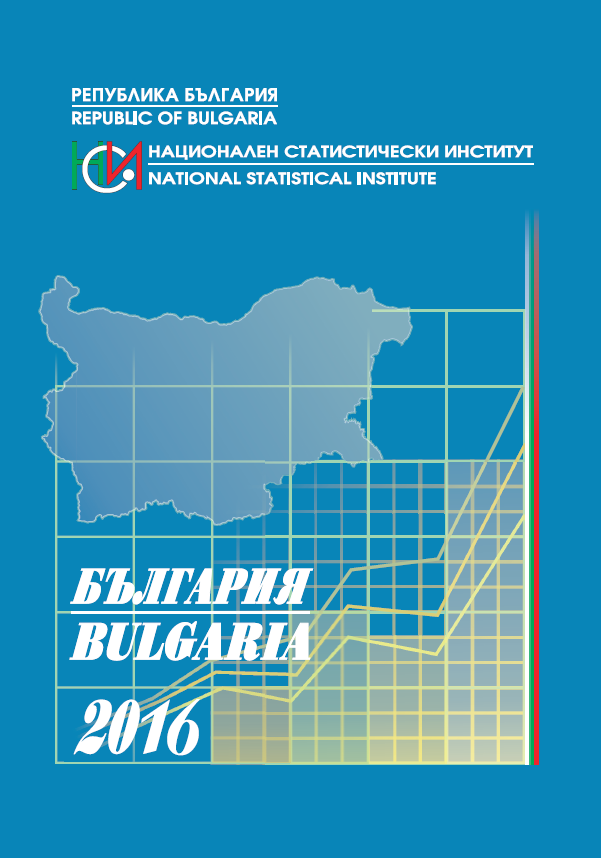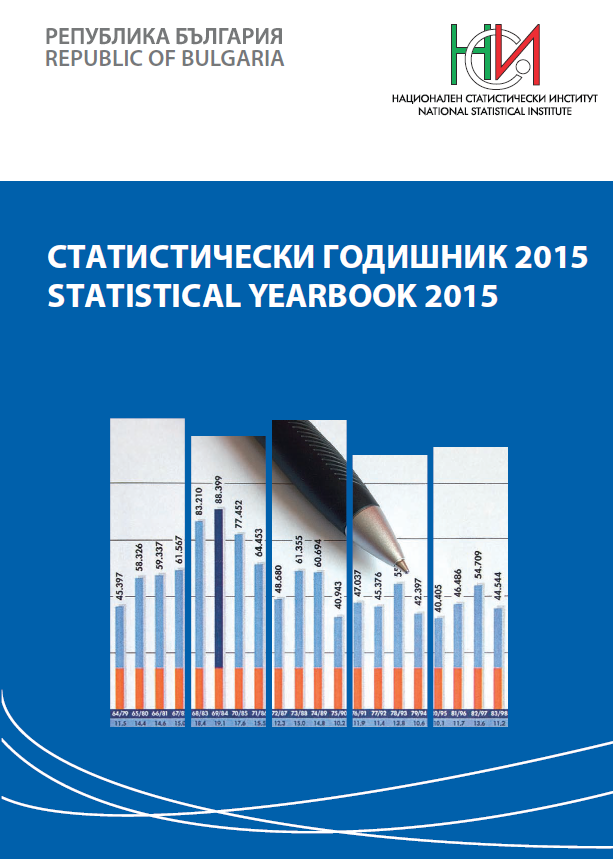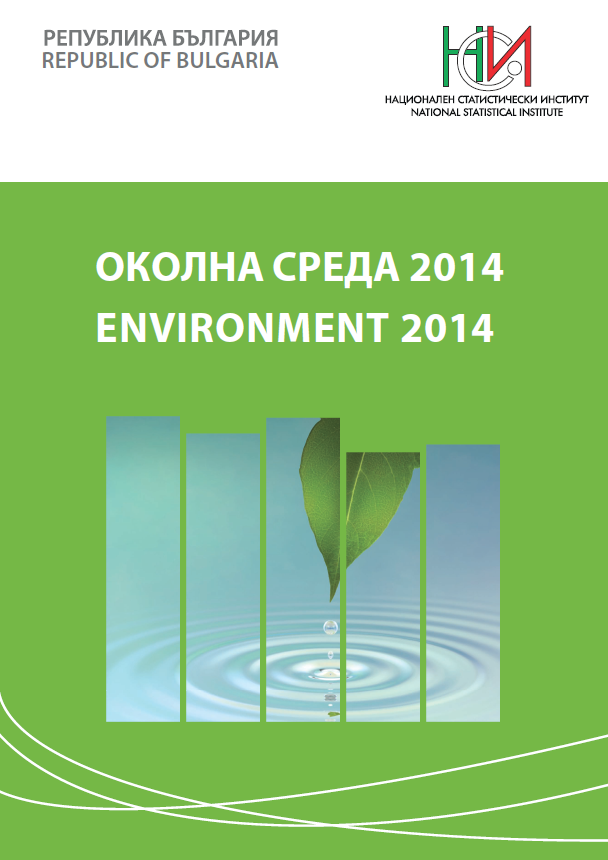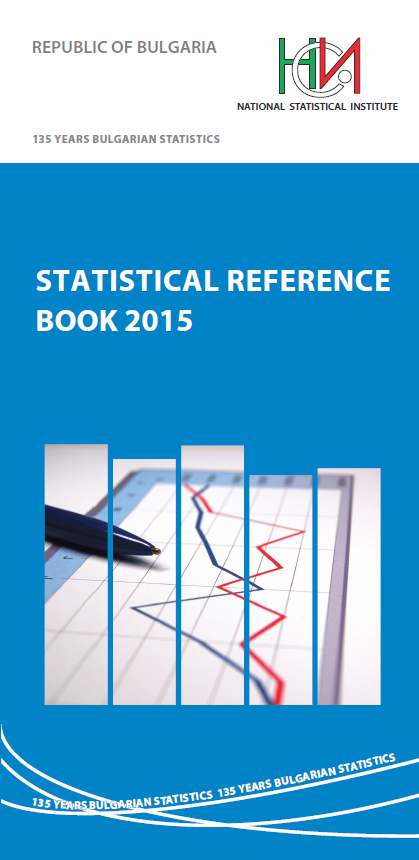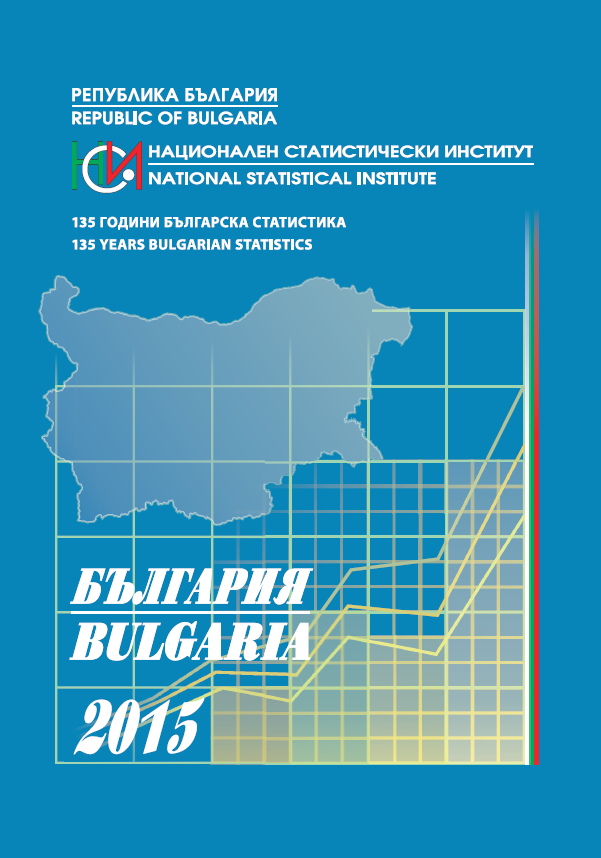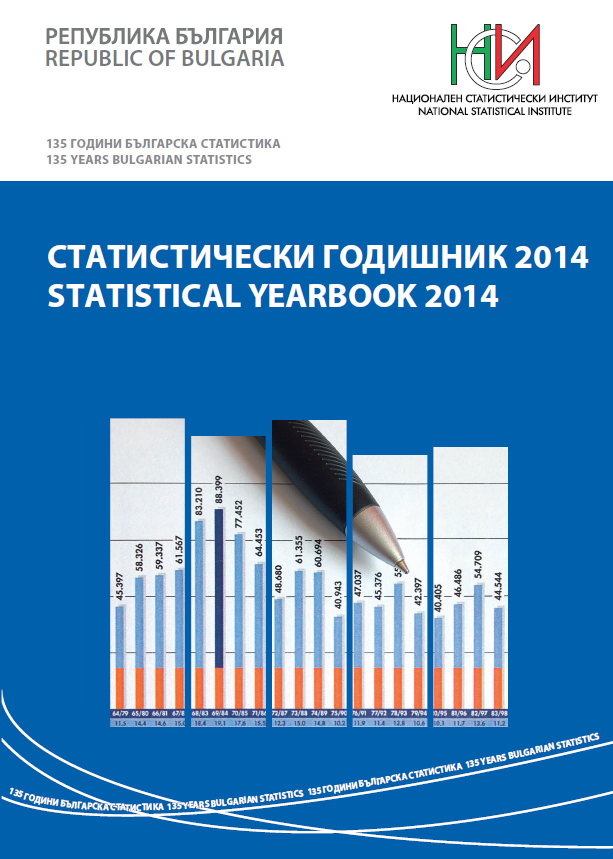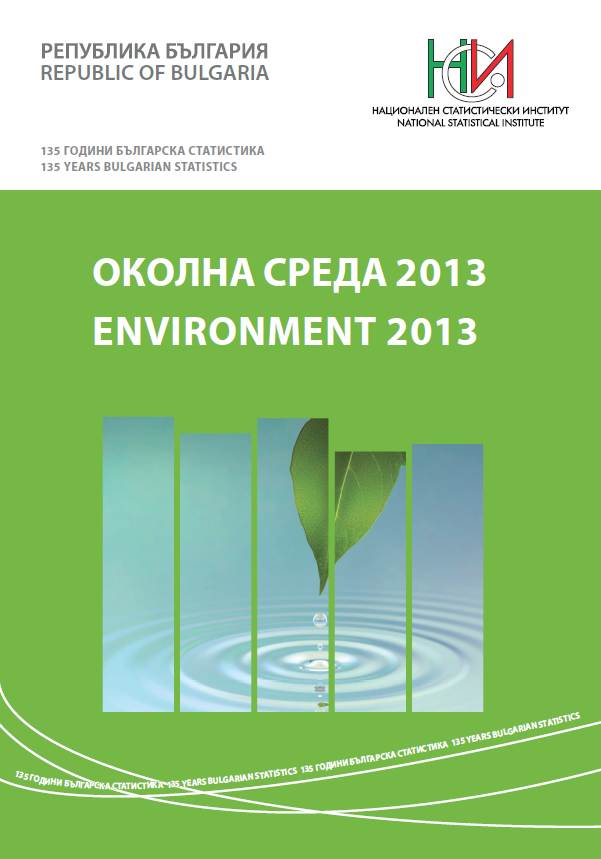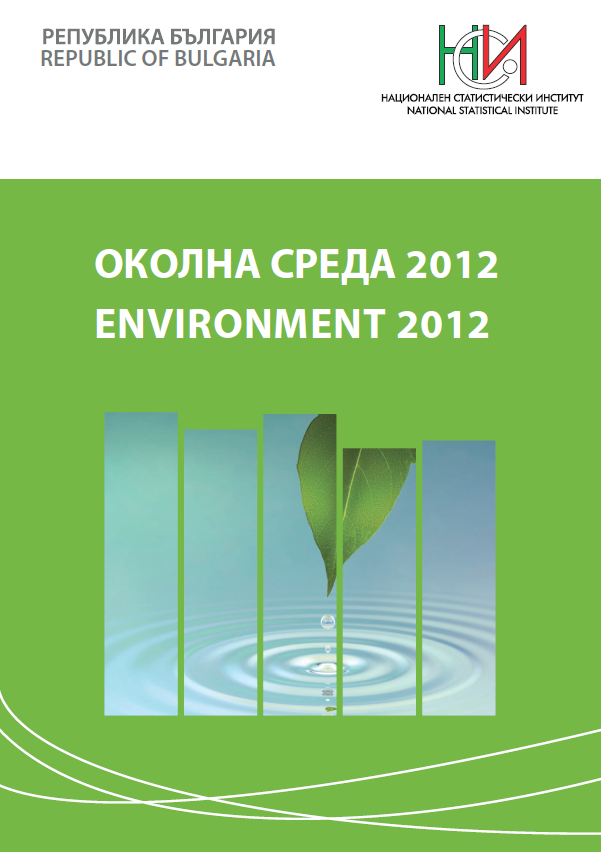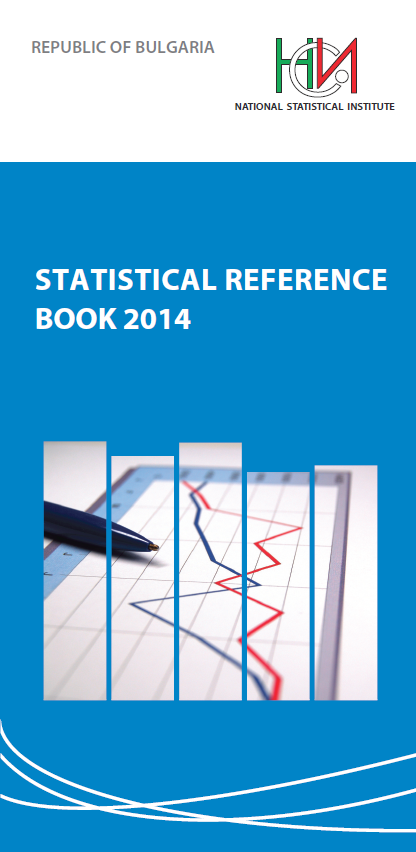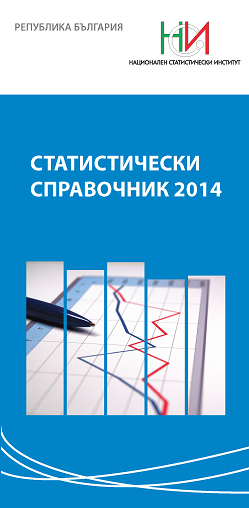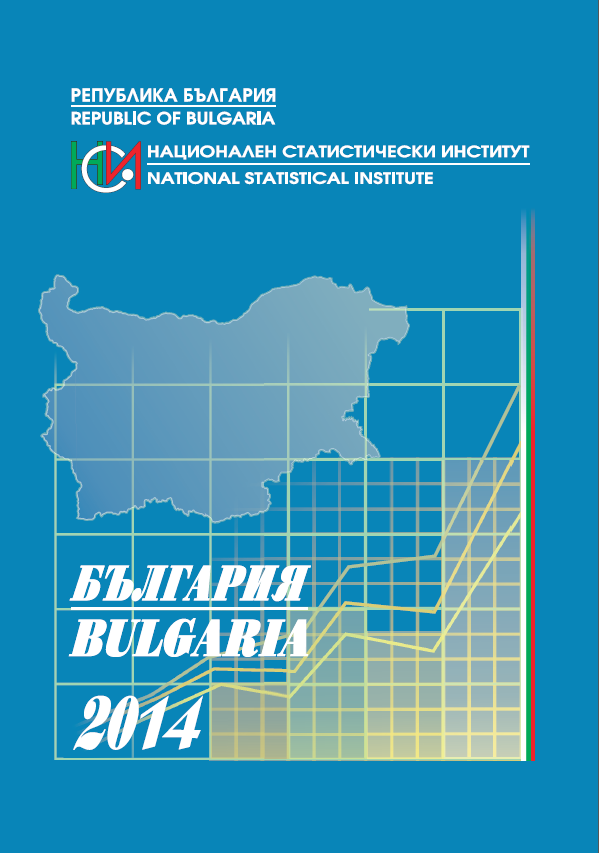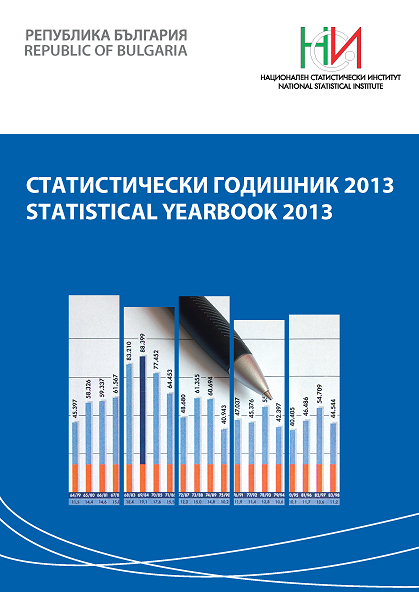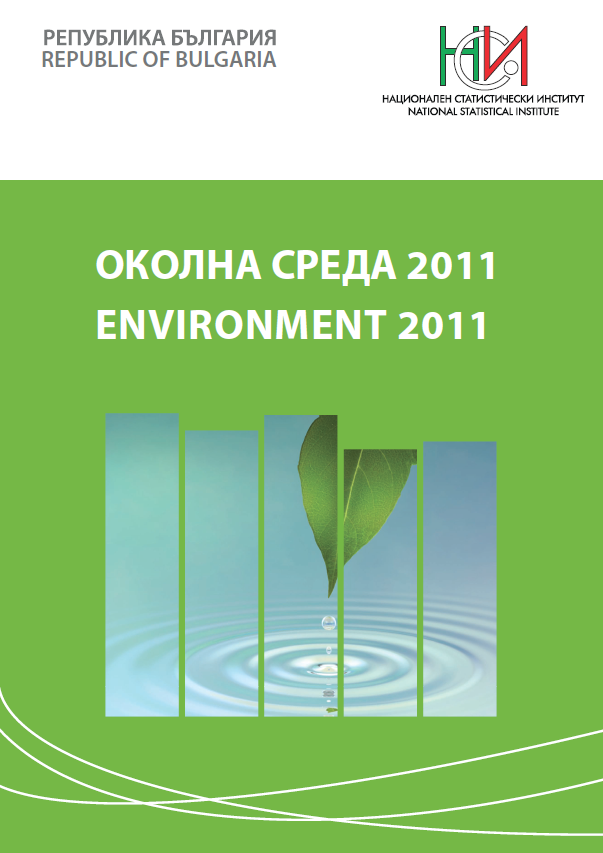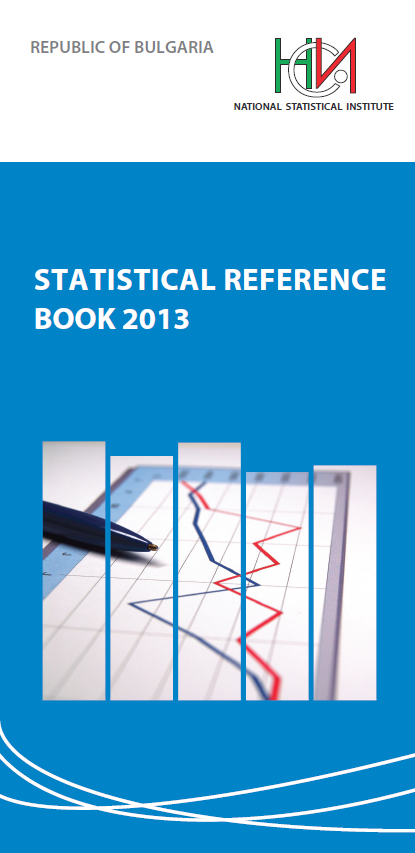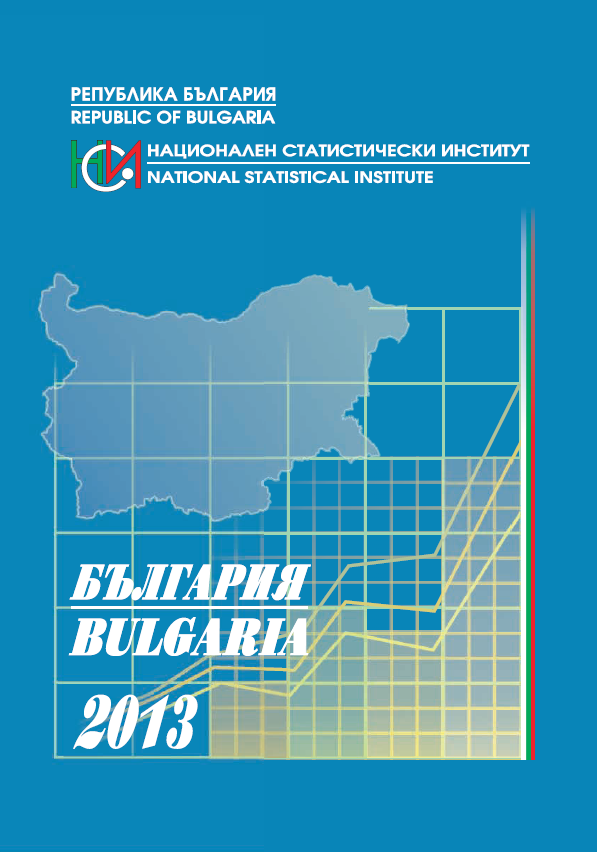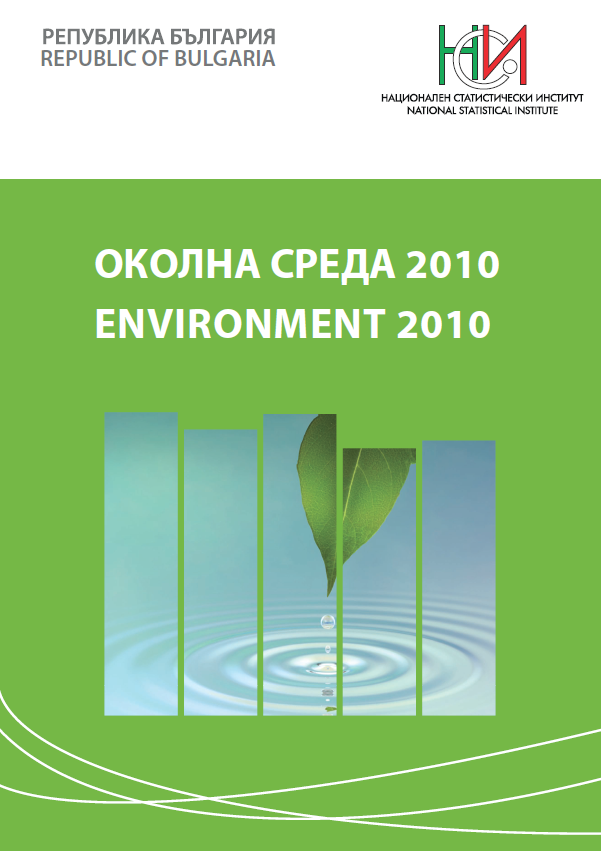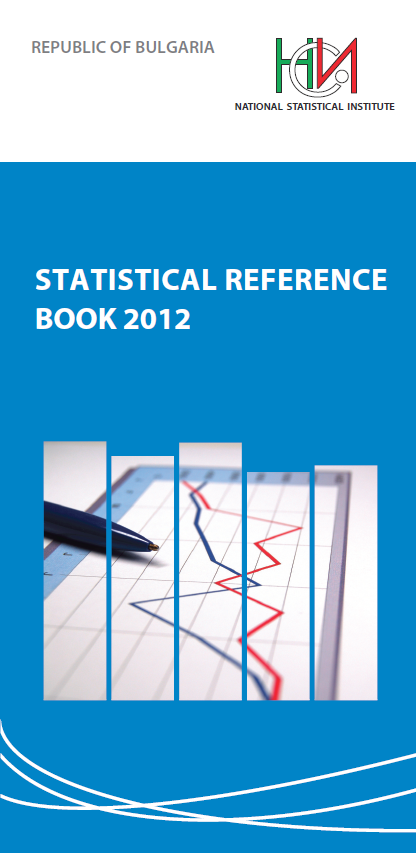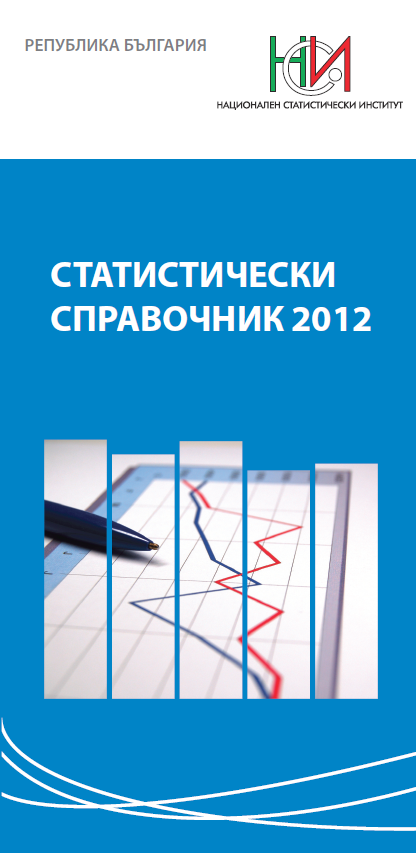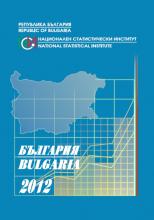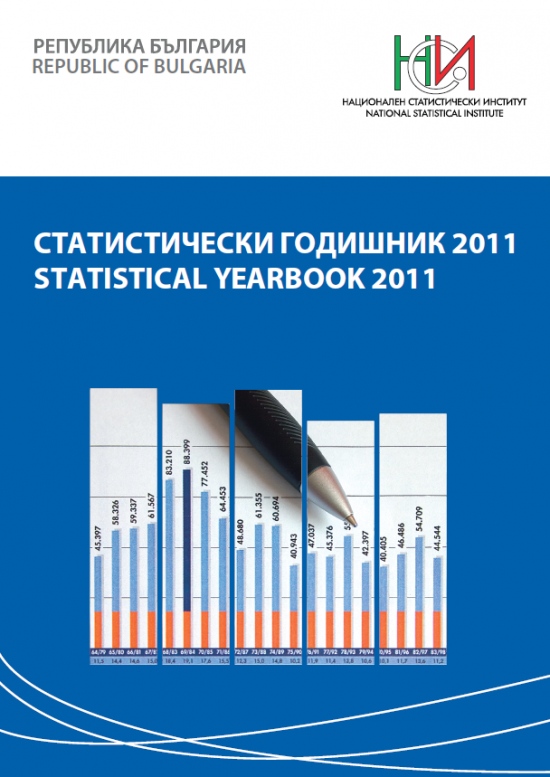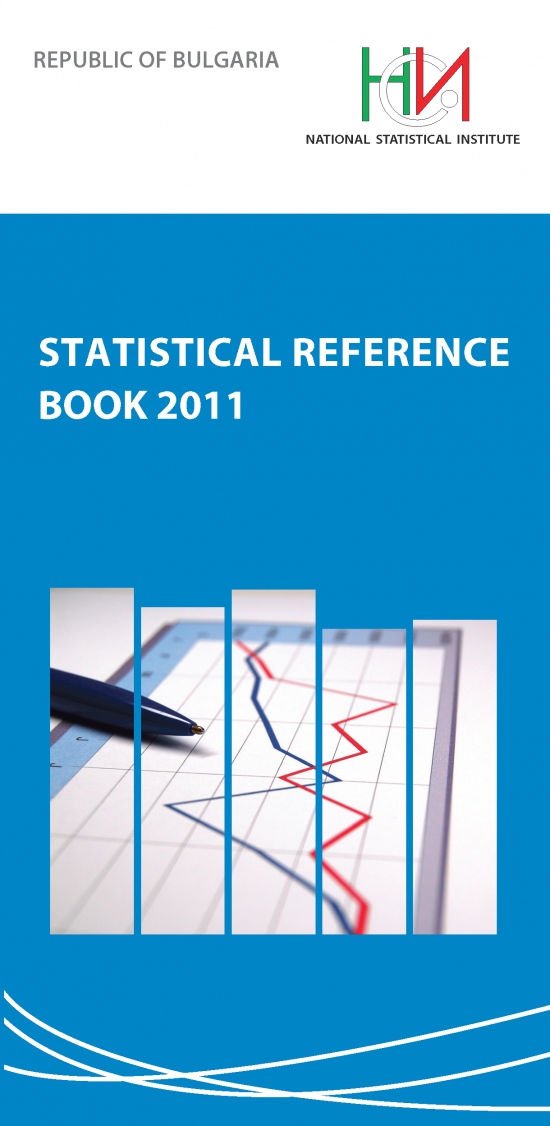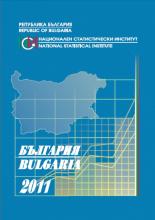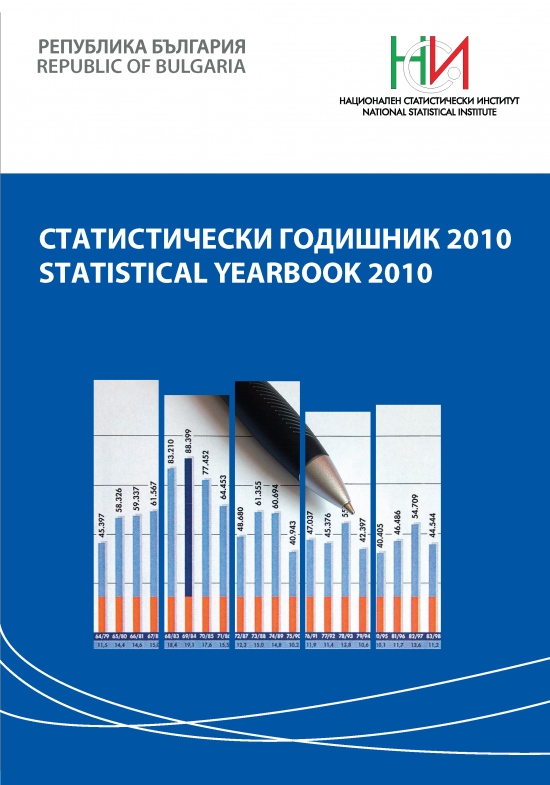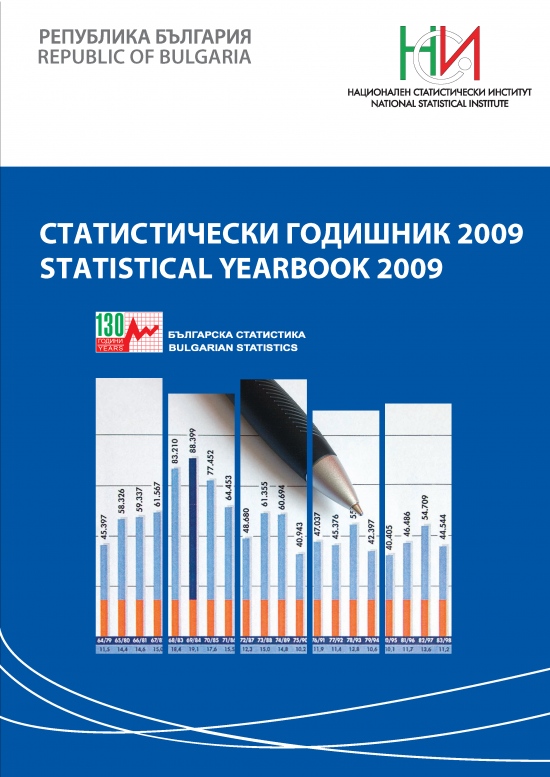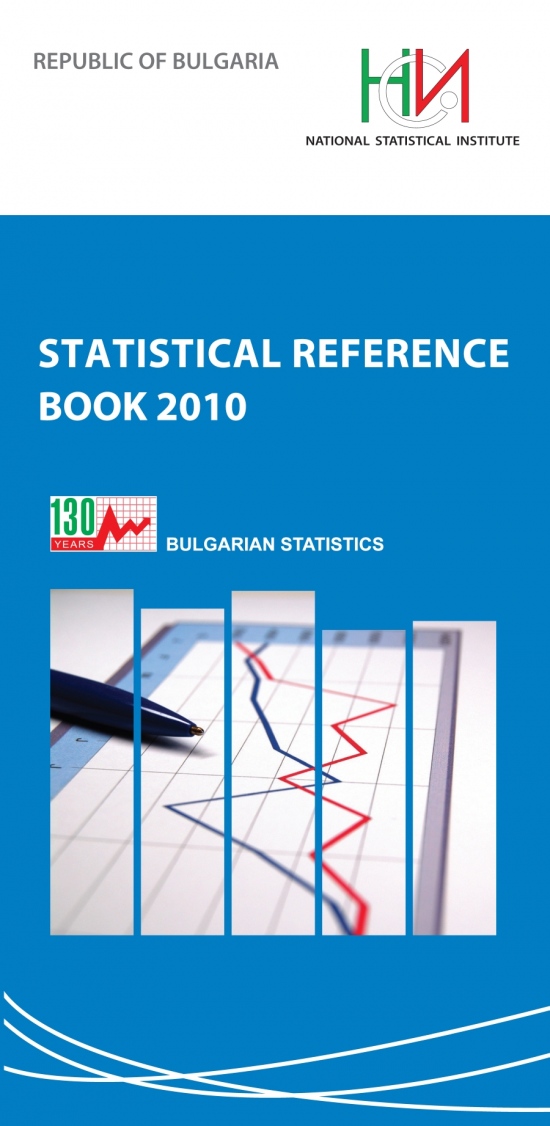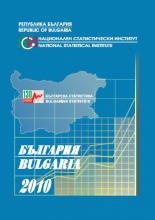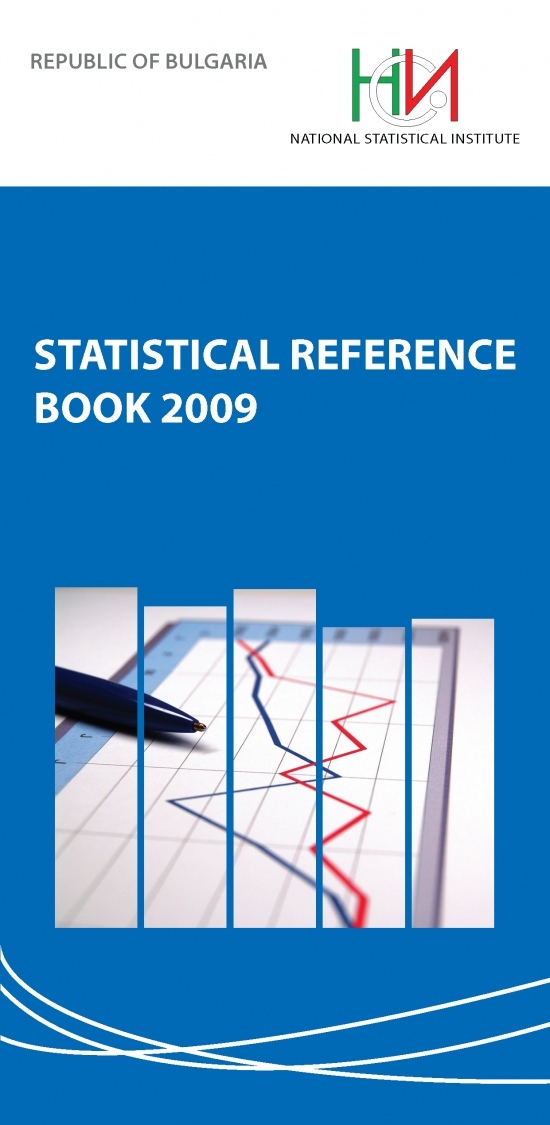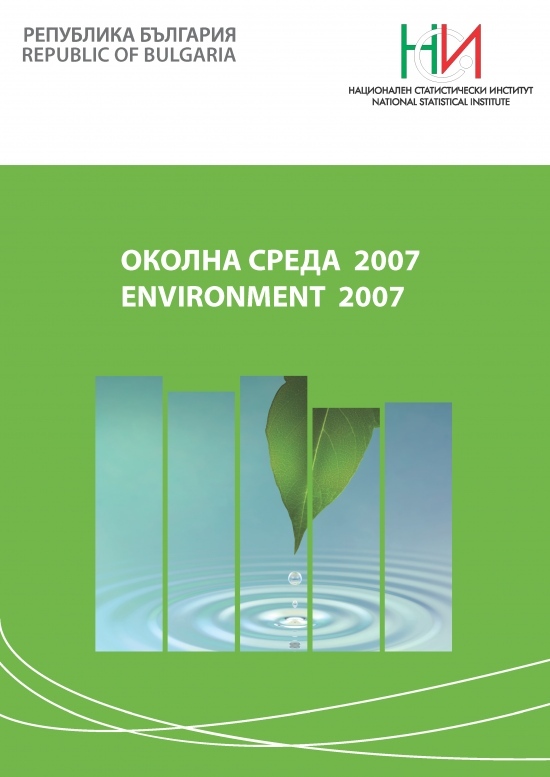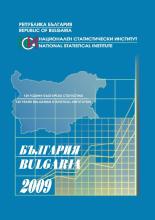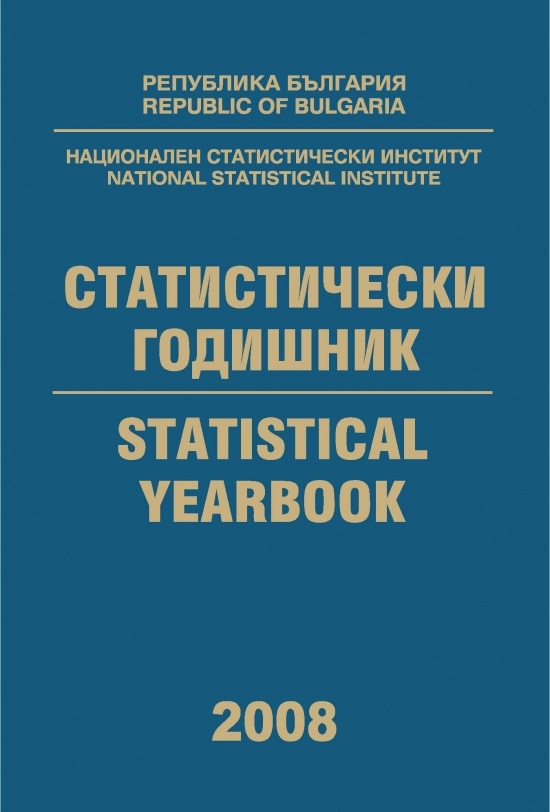Environmental goods and services
| Contact | |
|---|---|
| Contact organisation | National Statistical Institute |
| Contact organisation unit | ‘Environmental and Energy Accounts‘ Department |
| Contact name | Ivaylo Rangelov |
| Contact person function | State expert |
| Contact mail address | Panayot Volov Str. 2 1038 Sofia, Bulgaria |
| Contact email address |
|
| Contact phone number | (+359 2) 9857 642 |
| Contact fax number |
|
| Metadata update | |
| Metadata last certified | 17 February 2025 |
| Metadata last posted | 17 February 2025 |
| Metadata last update | 17 February 2025 |
| Statistical presentation | |
| Data description | Data for the environmental goods and services sector include the following economic variables: output valued at basic prices (purchaser prices), gross value added and employment solely in environmental activities, according to the System of Environmental-Economic Accounting 2012 – Central Framework (SEEA SF 2012) by economic activity, according to the Classification of Economic Activities (NACE Rev.2). The data are the result of a statistical survey „Environmental Goods and Services“ conducted by the National Statistical Institute. |
| Classification system |
|
| Sector coverage | The statistical survey covers enterprises and kind-of-activity units (KAUs) from all economic activities. From the "General Government" sector (S13), according to the ESA 2010 (paragraph 2.113) the institutional units classified in the following sub-sectors are covered:
|
| Statistical concepts and definitions | „Environmental goods and services sector“ means the production activities of a national economy that generate environmental products (environmental goods and services). „Environmental products“ (environmental goods and services) are products that have been produced for the purpose of environmental protection and resource management. „Environmental protection“ means that a good or service helps preventing, reducing and eliminating pollution and any other degradation of the environment. „Resource management“ includes the preservation, maintenance and enhancement of the stock of natural resources and therefore the safeguarding of those resources against depletion. Environmental goods and services fall within the following categories: environmental specific services, environmental sole purpose products (connected products), adapted goods and environmental technologies. The market output is reported at basic prices (purchaser’s prices). The gross value added is calculated as a difference between the market output at basic prices and the intermediate consumption. The employed persons are those related only to environmental activities and are reported in full-time equivalent. Definitions are used according to the applicable legislation: Regulation (EU) № 691/2011 on European environmental economic accounts and Eurostat's Environmental Goods and Services Sector Accounts Handbook.
|
| Statistical unit | The statistical unit is an enterprise and kind-of-activity unit. For the sector "General Government" is an institutional unit. The General Government sector covers institutional units classified in the following subsectors: Central Government and Local Government. |
| Statistical population | The statistical population is determined by statistical units (enterprises, kind-of-activity units from all economic activities and institutional units from the "Central Government" sector with more than 10 employed persons included in the Statistical Business Register (SBR). Statistical units with less than 10 employees are excluded from the surveys, in order to reduce the respondents’ burden. The following statistical and administrative sources are used to determine the statistical units for comprehensive survey:
Statistical units for sample survey are determined by selection of simple random samples for the part of non-covered statistical units, due to the large number of enterprises. |
| Reference area | Total for the country. |
| Time coverage | 2014 - 2022 year |
| Base period | Not applicable. |
| Unit of measure | |
| |
| Reference period | |
The reference period for EGSS data is the calendar year. | |
| Institutional mandate | |
| Legal acts and other agreements | List of applicable legislation:
|
| Data sharing | The data are provided annually to Eurostat. |
| Confidentiality | |
| Confidentiality - policy | Regulation (EU) № 223/2009 on European statistics provides for the need to establish common principles and guidelines ensuring the confidentiality of data used for the production of European statistics and access to such confidential data, with due regard to technical developments and the requirements of users in a democratic society. The Statistics Act (Art. 25, para. 1) stipulates that individual data received and collected through statistical surveys shall constitute a statistical secret and may be used only for statistical purposes. |
| Confidentiality - data treatment | When processing and summarizing data from the „Environmental Goods and Services“ survey, two types of restrictions apply:
The threshold rule ensures that if the value of a given cell from the statistics table is formed by 1 or 2 statistical units that cell remains hidden. The dominant rule, according to the Statistics Act, is (1:85), that is, the information in a given cell is subject to "suppression" if one statistical unit forms 85 percent or more of the value of the indicator for the entire studied population or subset. Secondary confidentiality is related to the closing of non-confidential values to prevent third parties from indirectly disclosing data from the totals or subtotals for each economic activity by NACE Rev.2 and CEPA/CReMA classes that are determined to be confidential during data verification for primary confidentiality. The Eurostat software - CIF version 2 is used to calculate the secondary confidentiality. |
| Release policy | |
| Release calendar | The date for publication of the statistical information is indicated in the Calendar for the dissemination of the results of the statistical surveys of the NSI. |
| Release calendar access | The calendar is available on the NSI website here. |
| User access | Data on environmental goods and services are published on the NSI website in the "Environment" section in accordance with the Statistics Act and the European Statistical Code of Practice, respecting professional independence and aiming at objectivity and transparency, whereby all users are on an equal footing. |
| Frequency of dissemination | |
Annual. | |
| Accessibility and clarity | |
| News release | Regular press release on the NSI website. |
| Publications |
|
| On-line database | Data on environmental goods and services are available on the NSI website at: |
| Micro-data access | Anonymised individual data can be provided for scientific and research purposes according to the Rules for provision of anonymised individual data for scientific and research purposes of NSI. |
| Other | Information service on request, according to the Rules for dissemination of statistical products and services of NSI. |
| Documentation on methodology |
|
| Quality documentation |
A Quality report is published annually with the publication of the statistical data for Environmental goods and services. |
| Quality management | |
| Quality assurance | Data quality is ensured by applying the principles of the European Statistics Code of Practice and the General Framework for Quality Management in the National Statistical System, including the application of the internal methodology "Environmental statistics and accounts", developed by NSI. Quality assurance activities ensure compliance with the requirements of the Statistics Act in terms of quality criteria: adequacy, accuracy, timeliness, punctuality, accessibility and clarity, comparability and logical connection. Through them, the application of the principles of the Code of European Statistical Practice is ensured: stable methodology; appropriate statistical procedures; moderate burden on respondents; cost effectiveness; applicability; accuracy; timeliness and accuracy of presentation; comparability and consistency; accessibility and clarity. |
| Quality assessment | The quality assessment is carried out at each stage of the statistical production process, in accordance with the Common Framework for Quality Management in the NSS and the principles of the European Statistics Code of Practice. It includes statistical processes and statistical information. The requirements of the current methodological documents are applied for quality assessment, including the instructions in the internal methodology „Environmental statistics and accounts”, developed by the NSI. To ensure high quality of the data, their consistency is checked with the data from the database of the annual activity report of enterprises, Foreign trade, Environmental protection and restoration expenditures and Revenues and expenditure for municipal waste and expenditures for water supply infrastructure, as well as with data reported to Eurostat for main macroeconomic indicators output and value added from Non-financial national accounts - Aggregated national accounts by industry (A*64 based on NACE, Rev.2). In order to ensure data quality, work is also being done to continuously improve the online-based information system for collecting primary data, providing the opportunity for arithmetic and logical control of input data, and additional analyses and checks are being carried out.
|
| Relevance | |
| User needs | Data on the environmental goods and services sector play an important place in the analyses of green growth and green job creation, policies for environmental protection and efficient use of natural resources, and monitoring of the Sustainable Development Goals (SDGs). The main users of statistical information from the survey are state and municipal structures, scientific institutes, associations, companies and citizens. |
| User satisfaction | The NSI conducts a regular statistical survey „User Satisfaction with the provided statistical information products and services“, which covers all statistical areas. It aims to assess user satisfaction with the statistical information provided by the NSI and to define recommendations for the future development of the statistical system in accordance with user needs. |
| Completeness | The data meet the requirements of applicable legislation in terms of scope and observed main characteristics (indicators). |
| Accuracy and reliability | |
| Overall accuracy | Data accuracy, as one of the criteria for the quality of statistical information, according to the Statistics Act, is guaranteed through quality assurance activities within the statistical production process. |
| Sampling error | To assess the stochastic accuracy of the study results, coefficients of variation (relative standard errors) and confidence intervals (the range of values that in 95% of cases contain the true value of the variable in the general population) are calculated for the main indicators. - i.e. the estimated total value of the indicators is in the middle of the confidence interval, which is calculated as follows: the estimated total value of the corresponding variable from the sample data -/+ the maximum error (the stochastic error multiplied by the guarantee factor). |
| Non-sampling error | The survey may contain non-sampling errors that occur at different stages of the survey and that cannot be completely eliminated. The main reasons for non-response are, on the one hand, the lack of an up-to-date survey framework at the time of sample formation (e.g., enterprises that have been restructured, closed or have ceased operations in the reporting period) and, on the other hand, refusal to participate in the survey or failure to contact. In order to reduce non-sampling errors, the following is carried out:
|
| Timeliness and punctuality | |
| Timeliness | The data are published 22 months after the reference year. |
| Punctuality | The data are published according to the deadlines in the Calendar for the dissemination of the results of the statistical surveys of the NSI. |
| Coherence and comparability | |
High degree of comparability between reporting periods. | |
| Comparability - geographical | Data are compiled at the national level. Given the application of common definitions and classifications, the data are comparable with other EU countries. |
| Comparability - over time | The data are comparable over time. Time series are available from 2014. When the methodology changes, the data in the time series are revised. |
| Coherence - cross domain | The data are coherent with:
Classification is applied according to the Statistical classification of economic activities (NACE rev.2), which allows for joint analysis with data from national accounts.
|
| Coherence - internal | The data have a high degree of internal consistency. The quality assessment procedure checks the consistency of the primary and statistical data by environmental protection classes (CEPA) and natural resource management classes (CReMA) and type of economic activity (NACE Rev.2), at national level, of the aggregated and detailed data in the reporting format under Regulation (EU) № 691/2011 on European environmental economic accounts. |
| Cost and burden | |
The costs (budget) for statistical surveys are disclosed in the National Statistical Program, published on the NSI website. Reducing the burden on respondents is a priority in conducting statistical surveys. In this regard, actions are being taken to alleviate the burden, for example: collecting and checking primary data through the online-based information system "Environmental Statistics", containing strict arithmetic and logical controls; improving the instructions for filling in survey forms; providing methodological and technical assistance; continuously exploring the possibilities for using information from administrative and other sources; conducting annual training for respondents and NSI experts, etc. The time needed to fill in the statistical forms is used as the main measure of the burden on respondents. For this purpose, a section is included in each form that respondents must fill in, regarding the time needed to fill in the form (including the time for data preparation). Based on this information and given the specifics of the study, the workload of the respondents can be determined as relatively high. The overall workload of the responsible experts is determined as high, especially in cases of revisions of data from previous reporting periods. | |
| Data revision | |
| Data revision - policy | In accordance with the principles of the European Statistics Code of Practice and the requirements of the internal rules/integrated management system, statistical processes are regularly monitored and revised as necessary. Revisions are carried out according to standard, established and transparent procedures and are regularly analysed with the aim of improving data sources, statistical processes and products. |
| Data revision - practice | The data is revised upon change in regulatory requirements, the applied methodology, or when necessary. |
| Statistical processing | |
| Source data |
Information from other statistical surveys (business statistics, non-financial national accounts, foreign trade, agriculture and forestry, energy statistics) and administrative sources (MAF, SEDA) is also used to define the statistical population, verify the data and make estimates. |
| Frequency of data collection | Annual. |
| Data collection | From the respondents, according to their activities, data are collected on the produced environmental goods, technologies and services by type, groups and domains for environmental protection or resource management activities. |
| Data validation | Data validation is part of the activities to ensure the quality of statistical information. Primary data are validated in terms of completeness, correct classification, units of measurement, comparability with previous years, comparability with data from other statistical areas and/or administrative sources, logical control, etc. Statistical data are validated in terms of their comparability, accuracy, reliability, etc., in accordance with the quality criteria according to the Statistics Act. |
| Data compilation | Data processing is carried out by strictly applying the methodology of the statistical survey and data verification methods. Data processing includes the actions by which, based on the primary data, brought into an appropriate form, statistical data are calculated, using specialized software products for this purpose. |
| Adjustment | Not applicable. |
| Comment | |
ESS Standard for Quality Reports Structure (ESQRS)
| Contact | |
|---|---|
| Contact organisation | National Statistical Institute |
| Contact organisation unit | ‘Environmental and Energy Accounts‘ Department |
| Contact name | Ivaylo Rangelov |
| Contact person function | State expert |
| Contact mail address | Panayot Volov Str. 2 1038 Sofia, Bulgaria |
| Contact email address |
|
| Contact phone number | (+359 2) 9857 642 |
| Contact fax number |
|
| Statistical presentation | |
| Data description | Data for the environmental goods and services sector include the following economic variables: output valued at basic prices (purchaser prices), gross value added and employment solely in environmental activities, according to the System of Environmental-Economic Accounting 2012 – Central Framework (SEEA SF 2012) by economic activity, according to the Classification of Economic Activities (NACE Rev.2). The data are the result of a statistical survey „Environmental Goods and Services“ conducted by the National Statistical Institute. |
| Classification system |
|
| Sector coverage | The statistical survey covers enterprises and kind-of-activity units (KAUs) from all economic activities. From the "General Government" sector (S13), according to the ESA 2010 (paragraph 2.113) the institutional units classified in the following sub-sectors are covered:
|
| Statistical concepts and definitions | „Environmental goods and services sector“ means the production activities of a national economy that generate environmental products (environmental goods and services). „Environmental products“ (environmental goods and services) are products that have been produced for the purpose of environmental protection and resource management. „Environmental protection“ means that a good or service helps preventing, reducing and eliminating pollution and any other degradation of the environment. „Resource management“ includes the preservation, maintenance and enhancement of the stock of natural resources and therefore the safeguarding of those resources against depletion. Environmental goods and services fall within the following categories: environmental specific services, environmental sole purpose products (connected products), adapted goods and environmental technologies. The market output is reported at basic prices (purchaser’s prices). The gross value added is calculated as a difference between the market output at basic prices and the intermediate consumption. The employed persons are those related only to environmental activities and are reported in full-time equivalent. Definitions are used according to the applicable legislation: Regulation (EU) № 691/2011 on European environmental economic accounts and Eurostat's Environmental Goods and Services Sector Accounts Handbook.
|
| Statistical unit | The statistical unit is an enterprise and kind-of-activity unit. For the sector "General Government" is an institutional unit. The General Government sector covers institutional units classified in the following subsectors: Central Government and Local Government. |
| Statistical population | The statistical population is determined by statistical units (enterprises, kind-of-activity units from all economic activities and institutional units from the "Central Government" sector with more than 10 employed persons included in the Statistical Business Register (SBR). Statistical units with less than 10 employees are excluded from the surveys, in order to reduce the respondents’ burden. The following statistical and administrative sources are used to determine the statistical units for comprehensive survey:
Statistical units for sample survey are determined by selection of simple random samples for the part of non-covered statistical units, due to the large number of enterprises. |
| Reference area | Total for the country. |
| Time coverage | 2014 - 2022 year |
| Base period | Not applicable. |
| Statistical processing | |
| Source data |
Information from other statistical surveys (business statistics, non-financial national accounts, foreign trade, agriculture and forestry, energy statistics) and administrative sources (MAF, SEDA) is also used to define the statistical population, verify the data and make estimates. |
| Frequency of data collection | Annual. |
| Data collection | From the respondents, according to their activities, data are collected on the produced environmental goods, technologies and services by type, groups and domains for environmental protection or resource management activities. |
| Data validation | Data validation is part of the activities to ensure the quality of statistical information. Primary data are validated in terms of completeness, correct classification, units of measurement, comparability with previous years, comparability with data from other statistical areas and/or administrative sources, logical control, etc. Statistical data are validated in terms of their comparability, accuracy, reliability, etc., in accordance with the quality criteria according to the Statistics Act. |
| Data compilation | Data processing is carried out by strictly applying the methodology of the statistical survey and data verification methods. Data processing includes the actions by which, based on the primary data, brought into an appropriate form, statistical data are calculated, using specialized software products for this purpose. |
| Adjustment | Not applicable. |
| Quality management | |
| Quality assurance | Data quality is ensured by applying the principles of the European Statistics Code of Practice and the General Framework for Quality Management in the National Statistical System, including the application of the internal methodology "Environmental statistics and accounts", developed by NSI. Quality assurance activities ensure compliance with the requirements of the Statistics Act in terms of quality criteria: adequacy, accuracy, timeliness, punctuality, accessibility and clarity, comparability and logical connection. Through them, the application of the principles of the Code of European Statistical Practice is ensured: stable methodology; appropriate statistical procedures; moderate burden on respondents; cost effectiveness; applicability; accuracy; timeliness and accuracy of presentation; comparability and consistency; accessibility and clarity. |
| Quality assessment | The quality assessment is carried out at each stage of the statistical production process, in accordance with the Common Framework for Quality Management in the NSS and the principles of the European Statistics Code of Practice. It includes statistical processes and statistical information. The requirements of the current methodological documents are applied for quality assessment, including the instructions in the internal methodology „Environmental statistics and accounts”, developed by the NSI. To ensure high quality of the data, their consistency is checked with the data from the database of the annual activity report of enterprises, Foreign trade, Environmental protection and restoration expenditures and Revenues and expenditure for municipal waste and expenditures for water supply infrastructure, as well as with data reported to Eurostat for main macroeconomic indicators output and value added from Non-financial national accounts - Aggregated national accounts by industry (A*64 based on NACE, Rev.2). In order to ensure data quality, work is also being done to continuously improve the online-based information system for collecting primary data, providing the opportunity for arithmetic and logical control of input data, and additional analyses and checks are being carried out.
|
| Relevance | |
| User needs | Data on the environmental goods and services sector play an important place in the analyses of green growth and green job creation, policies for environmental protection and efficient use of natural resources, and monitoring of the Sustainable Development Goals (SDGs). The main users of statistical information from the survey are state and municipal structures, scientific institutes, associations, companies and citizens. |
| User satisfaction | The NSI conducts a regular statistical survey „User Satisfaction with the provided statistical information products and services“, which covers all statistical areas. It aims to assess user satisfaction with the statistical information provided by the NSI and to define recommendations for the future development of the statistical system in accordance with user needs. |
| Completeness | The data meet the requirements of applicable legislation in terms of scope and observed main characteristics (indicators). |
| Data completeness - rate | The data are reported within the deadline set by Eurostat. Data on the market output of environmental goods and services are available for all mandatory aggregations by economic activity groups and environmental and resource management domains. Data on the variables for mandatory reporting (market output, value added, exports and employment) are highly complete and are reported by type of environmental product/good, economic activity and domain. For market activities, market output is reported by specific environmental services and cleaner and resource-efficient products. |
| Accuracy and reliability | |
| Overall accuracy | Data accuracy, as one of the criteria for the quality of statistical information, according to the Statistics Act, is guaranteed through quality assurance activities within the statistical production process. |
| Sampling error | To assess the stochastic accuracy of the study results, coefficients of variation (relative standard errors) and confidence intervals (the range of values that in 95% of cases contain the true value of the variable in the general population) are calculated for the main indicators. - i.e. the estimated total value of the indicators is in the middle of the confidence interval, which is calculated as follows: the estimated total value of the corresponding variable from the sample data -/+ the maximum error (the stochastic error multiplied by the guarantee factor). |
| Sampling errors - indicators |
|
| Non-sampling error | The survey may contain non-sampling errors that occur at different stages of the survey and that cannot be completely eliminated. The main reasons for non-response are, on the one hand, the lack of an up-to-date survey framework at the time of sample formation (e.g., enterprises that have been restructured, closed or have ceased operations in the reporting period) and, on the other hand, refusal to participate in the survey or failure to contact. In order to reduce non-sampling errors, the following is carried out:
|
| Coverage error | Not applicable. |
| Over-coverage - rate | Not calculated. |
| Common units - proportion | Not applicable. |
| Measurement error | Measurement errors are errors that occur during data collection and lead to differences between the recorded and actual values of the survey variables. These errors are related to:
Measurement errors are reduced by clear guidelines and instructions for completing the statistical survey form, and checking the data based on clearly defined minimal criteria regarding their completeness, correct classification of environmental goods/services, units of measurement, comparability with previous years, logical and arithmetical controls on input data, etc. |
| Non response error | Non-response errors for individual questions (variables) are identified and corrected by clarifying the reason for non-response (refusal, no contact, etc.). The goal of conducting a statistical survey is to collect data from all respondents, i.e. to ensure 100% collection of primary data. In practice, there are cases where not all respondents provide data, which is why the percentage of non-responses is estimated, which should be minimized. |
| Unit non-response - rate | Not applicable. |
| Item non-response - rate | Not applicable. |
| Processing error | In order to minimize possible processing errors, in all of the stages of data collection and processing from the survey include a large number of arithmetic and logical controls to verify their completeness, additional analyses and checks for comparability and consistency with other conducted surveys in business statistics and environmental statistics. Data processing is performed with specialized software – Excel, SPSS and/or R. |
| Imputation - rate | Not applicable. |
| Model assumption error | Not applicable. |
| Seasonal adjustment | Not applicable. |
| Data revision - policy | In accordance with the principles of the European Statistics Code of Practice and the requirements of the internal rules/integrated management system, statistical processes are regularly monitored and revised as necessary. Revisions are carried out according to standard, established and transparent procedures and are regularly analysed with the aim of improving data sources, statistical processes and products. |
| Data revision - practice | The data is revised upon change in regulatory requirements, the applied methodology, or when necessary. |
| Data revision - average size | Not applicable. |
| Timeliness and punctuality | |
| Timeliness | The data are published 22 months after the reference year. |
| Time lag - first results | Not applicable. |
| Time lag - final results | Not applicable. |
| Punctuality | The data are published according to the deadlines in the Calendar for the dissemination of the results of the statistical surveys of the NSI. |
| Punctuality - delivery and publication | All publications are submitted for publication in a timely manner, according to the Calendar for the dissemination of the results of the statistical surveys of the NSI. |
| Coherence and comparability | |
High degree of comparability between reporting periods. | |
| Comparability - geographical | Data are compiled at the national level. Given the application of common definitions and classifications, the data are comparable with other EU countries. |
| Asymmetry for mirror flows statistics - coefficient | Not applicable. |
| Comparability - over time | The data are comparable over time. Time series are available from 2014. When the methodology changes, the data in the time series are revised. |
| Length of comparable time series | 2014 - 2022 year |
| Coherence - cross domain | The data are coherent with:
Classification is applied according to the Statistical classification of economic activities (NACE rev.2), which allows for joint analysis with data from national accounts.
|
| Coherence - sub annual and annual statistics | Not applicable. |
| Coherence - National Accounts | The data for environmental goods and services sector are coherent with principles, definitions and reported data in National Accounts (ESA - European System of Accounts).
|
| Coherence - internal | The data have a high degree of internal consistency. The quality assessment procedure checks the consistency of the primary and statistical data by environmental protection classes (CEPA) and natural resource management classes (CReMA) and type of economic activity (NACE Rev.2), at national level, of the aggregated and detailed data in the reporting format under Regulation (EU) № 691/2011 on European environmental economic accounts. |
| Accessibility and clarity | |
| News release | Regular press release on the NSI website. |
| Publications |
|
| On-line database | Data on environmental goods and services are available on the NSI website at: |
| Data tables - consultations | Not applicable. |
| Micro-data access | Anonymised individual data can be provided for scientific and research purposes according to the Rules for provision of anonymised individual data for scientific and research purposes of NSI. |
| Other | Information service on request, according to the Rules for dissemination of statistical products and services of NSI. |
| Metadata - consultations | Not applicable. |
| Documentation on methodology |
|
| Metadata completeness – rate | High. |
| Quality documentation |
A Quality report is published annually with the publication of the statistical data for Environmental goods and services. |
| Cost and burden | |
The costs (budget) for statistical surveys are disclosed in the National Statistical Program, published on the NSI website. Reducing the burden on respondents is a priority in conducting statistical surveys. In this regard, actions are being taken to alleviate the burden, for example: collecting and checking primary data through the online-based information system "Environmental Statistics", containing strict arithmetic and logical controls; improving the instructions for filling in survey forms; providing methodological and technical assistance; continuously exploring the possibilities for using information from administrative and other sources; conducting annual training for respondents and NSI experts, etc. The time needed to fill in the statistical forms is used as the main measure of the burden on respondents. For this purpose, a section is included in each form that respondents must fill in, regarding the time needed to fill in the form (including the time for data preparation). Based on this information and given the specifics of the study, the workload of the respondents can be determined as relatively high. The overall workload of the responsible experts is determined as high, especially in cases of revisions of data from previous reporting periods. | |
| Confidentiality | |
| Confidentiality - policy | Regulation (EU) № 223/2009 on European statistics provides for the need to establish common principles and guidelines ensuring the confidentiality of data used for the production of European statistics and access to such confidential data, with due regard to technical developments and the requirements of users in a democratic society. The Statistics Act (Art. 25, para. 1) stipulates that individual data received and collected through statistical surveys shall constitute a statistical secret and may be used only for statistical purposes. |
| Confidentiality – data treatment | When processing and summarizing data from the „Environmental Goods and Services“ survey, two types of restrictions apply:
The threshold rule ensures that if the value of a given cell from the statistics table is formed by 1 or 2 statistical units that cell remains hidden. The dominant rule, according to the Statistics Act, is (1:85), that is, the information in a given cell is subject to "suppression" if one statistical unit forms 85 percent or more of the value of the indicator for the entire studied population or subset. Secondary confidentiality is related to the closing of non-confidential values to prevent third parties from indirectly disclosing data from the totals or subtotals for each economic activity by NACE Rev.2 and CEPA/CReMA classes that are determined to be confidential during data verification for primary confidentiality. The Eurostat software - CIF version 2 is used to calculate the secondary confidentiality. |
| Comment | |
Air emissions in 2023
In 2023, emissions of sulphur oxides and nitrogen oxides, non-methane volatile organic compounds, methane, carbon monoxide, carbon dioxide, ammonia and fine particulate matter decreased compared to 2022. Emissions of sulphur oxides and carbon dioxide are 44 thousand tons and 34.5 million tons, respectively. Compared to 2022, the largest decrease was observed in emissions of sulphur oxides - 36%, and carbon dioxide - 26%, which is due to a decrease in the amount of fuels used in the energy sector.
...Environmental Statistics - Annual data for 2023
The National Statistical Institute presents the results of the annual surveys in the field of environmental statistics for 2023.
In 2023, 99.4% of the population in the country were connected to public water supply. The water delivered to the households was 250.08 mill. m3, reporting a slight decrease compared to 2022 - by 0.4%. In 2023, 4.6% from the population in the country were on water supply regime (due to drought).
The generated municipal waste in 2023 was 3 165 thousand tons. Compared to 2022, there was an increase of 0.24%. The generated waste per capita for 202...
Environmental Statistics - Annual data for 2022
The National Statistical Institute presents the results of annual surveys in the field of environmental statistics for 2022.
In 2022, emissions of sulphur and nitrogen oxides, non-methane volatile organic compounds, methane, carbon monoxide, carbon dioxide, nitrous oxide and ammonia decrease compared to 2021. The biggest reduction is in the emissions of sulphur oxides - 11%, compared to 2021.
In 2022, 99.5% from country population is connected with public water supply. Water delivered to the households is 251.19 mill. m3 which is with 1.8% less than 2021. In 2022, 2...
“Improving data for circular economy - packaging waste and construction waste” project
In August 2022 The National Statistical Institute completed successfully the work on the “Improving data for circular economy - packaging waste and construction waste” project in accordance with Grant Agreement with the European Commission № 101023440 - 2020-BG-CEPCW. The duration of the project was18 months – fromMarch 2021 to August 2022, as the work of the project was distributed in two work packages: WP1 “Packaging waste” and WP2 “Construction waste”.
The planned activities were carried out, which enabled a more complete analysis of the applied approach ...
Environmental Statistics - Annual data for 2020
The National Statistical Institute presents the results of annual surveys in the field of environmental statistics for 2020.
In 2020, the share of tangible fixed assets with ecological use at the end of the year by accounting value amounts to 4.8% of the total tangible fixed assets available in the country.
In 2020, the share of expenditure available at the end of the year for acquisition of tangible and intangible fixed assets with ecological use amounts to 2.8% of the total expenditure for acquisition of tangible and intangible fixed assets in the country.
In...
Environmental Statistics - Annual data for 2019
The National Statistical Institute presents the results of annual surveys in the field of environmental statistics for 2019.
The tangible fixed assets with ecological use are a part of the total tangible fixed assets within the country. In 2019, the share of tangible fixed assets with ecological use at the end of the year by accounting value amounts to 4.8% of the total tangible fixed assets available in the country.
The expenditure of environmental protection and restoration are part of the total expenditure of tangible and intangible fixed assets. In 2019, the share of...
Environmental Statistics - Annual data for 2018
In 2018 the total use of freshwater and non-freshwater in the country is 4 647 million m3 which decreased with 1.8% compared to 2017. The daily average household water consumption from public water supply remains on the same level compared to 2017 - 99 litres per capita.
In 2018 the total value of tangible fixed assets with ecological use in the country amounted to 9 523.6 million BGN which compared to 2017 increased by 0.6%.
...Environmental Statistics - Annual data for 2017
The National Statistical Institute presents results from annual surveys in the domain of environmental statistics for 2017. Detailed data by particular topics are placed under the heading ‘Environment’ on the NSI web site: https://www.nsi.bg.
...Environmental Accounts - Annual data for 2016
The National Statistical Institute presents results from annual surveys in the domain of environmental statistics for 2016. Detailed data by particular topics are placed under the heading "Environment" on the NSI web site: https://www.nsi.bg.
...Environmental Accounts - Annual data for 2015
The National Statistical Institute presents results from annual surveys in the domain of environmental statistics for 2015. Detailed data by particular topics are placed under the heading ‘Environment’ on the NSI web site: https://www.nsi.bg.
...Environmental Statistics - Annual data for 2014
The National Statistical Institute presents results from annual surveys in the domain of environmental statistics for 2014. Detailed data by particular topics are placed under the heading "Environment" on the NSI web site: https://www.nsi.bg
...Environmental Statistics - Annual data for 2013
The National Statistical Institute presents results from annual surveys in the domain of environmental statistics for 2013. Detailed data by particular topics are placed under the heading "Environment" on the NSI web site: https://www.nsi.bg
...Environmental Statistics - Annual data for 2012
The National Statistical Institute presents results from annual surveys in the domain of environmental statistics for 2012. Detailed data by particular topics are placed under the heading "Environment" on the NSI web page: https://www.nsi.bg.
...Environmental Statistics - Annual data for 2011
Environmental Statistics - Annual data for 2010
Environmental Statistics - Annual data for 2009
Environmental Statistics - Annual data for 2008
Environment 2022
The National Statistical Institute presents to users of statistical information electronic bilingual (Bulgarian/English) publication Environment 2022 that contains data from surveys of NSI in 2022 related to the environment in Bulgaria. There are also data on key indicators for the period 2018 - 2022.
The information is systematized in the following sections:
• Еmissions in the air
• Water
• Underground reserves
• Protected natural scenery
• Мaterial flow accounts
• Waste
• Noise
• Еnvironmental taxes
• Expend...
Statistical Reference Book 2024
Тhe National Statistical Institute presents to the users of statistical information the annual publication - Statistical Reference Book 2024 in English.
The Statistical Reference Book presents up-to-date information on the demographic processes as well as the economic, social and cultural development of the Republic of Bulgaria for the 2019 - 2023 period.
The publication presents data on main macroeconomic indicators of the national economy - gross domestic product, investments and finance; and economic acti...
Bulgaria 2024
The National Statistical Institute presents the bilingual (Bulgarian/English) brochure Bulgaria 2024 to the users of statistical information. The brochure is addressed to a wide range of users (international institutions, representatives of business, students, experts etc.) and changes the traditional presentation of statistical information by offering an innovative structure with a parallel translation in English.
The publication contains up-to-date statistical information about the demographic, social and economic development of the country over the 2018 - 2023 ...
Statistical Reference Book 2024 (Bulgarian version)
The National Statistical Institute presents to users of statistical information the annual publication - Statistical Reference Book 2024 in Bulgarian.
The Statistical Reference Book presents up-to-date information on the demographic processes as well as the economic, social and cultural development of the Republic of Bulgaria for the 2019 - 2023 period.
The publication presents data on main macroeconomic indicators of the national economy - gross domestic product, investments and finance; and economic activity groupings - industry, agriculture, forestry,...
Statistical Yearbook 2023
The National Statistical Institute (NSI) has the pleasure to present to the attention of national and foreign users of statistical information the 91-st edition of the ‘Statistical Yearbook of the Republic of Bulgaria’ in printed format.
It provides current statistical information about the demographic, economic and social development of the country for 2017 - 2022 in different territorial and classification aggregations and breakdowns.
According to the Law on Statistics, official source of information in the Republic of Bulgaria is the National Statistical Sys...
Environment 2021
The National Statistical Institute presents to users of statistical information electronic bilingual (Bulgarian/English) publication Environment 2021 that contains data from surveys of NSI in 2021 related to the environment in Bulgaria. There are also data on key indicators for the period 2017 - 2021.
The information is systematized in the following sections:
• Еmissions in the air
• Water
• Underground reserves
• Protected natural scenery
• Мaterial flow accounts
• Waste
• Noise
• Еnvironmen...
Statistical Reference Book 2023 (Bulgarian version)
The National Statistical Institute presents to users of statistical information the annual publication - Statistical Reference Book 2023 in Bulgarian.
The Statistical Reference Book presents topical information on the demographic processes as well as the economic, social and cultural development of the Republic of Bulgaria for the 2018 - 2022 period.
The publication presents data on main macroeconomic indicators of the national economy - gross domestic product, investments and finance; and economic activity groupings ...
Statistical Reference Book 2023
The National Statistical Institute presents to users of statistical information the annual publication - Statistical Reference Book 2023 in English.
The Statistical Reference Book presents topical information on the demographic processes as well as the economic, social and cultural development of the Republic of Bulgaria for the 2018 - 2022 period.
The publication presents data on main macroeconomic indicators of the national economy - gross domestic product, investments and finance; and economic activity groupings - industry, agriculture, fore...
Statistical Yearbook 2022
It provides current statistical information about the demographic, economic and social development of the country for 2016 - 2021 in different territorial and classification aggregations and breakdowns.
According to the Law on Statistics, official source of information in the Republic of Bulgaria is the National Statistical ...
Environment 2020
The National Statistical Institute presents to users of statistical information electronic bilingual (Bulgarian/English) publication Environment 2020 that contains data from surveys of NSI in 2020 related to the environment in Bulgaria. There are also data on key indicators for the period 2016 - 2020.
The information is systematized in the following sections:
• Еmissions in the air
• Water
• Underground reserves
• Protected natural scenery
• Мaterial flow accounts
• Waste
• Noise
...
Statistical Reference Book 2022
The Statistical Reference Book presents topical information on the demographic processes as well as the economic, social and cultural development of the Republic of Bulgaria for the 2017 - 2021 period.
The publication presents data on main macroeconomic indicators of the national economy - gross domestic product, investments and finance; and economic activity groupings - industry, agriculture, ...
Bulgaria 2022
The National Statistical Institute presents the bilingual (Bulgarian/English) brochure Bulgaria 2022 to users of statistical information. The brochure is addressed to a wide range of users (international institutions, business, students, experts etc.) and changes the traditional presentation of statistical information by offering an innovative structure with a parallel translation in English. The publication contains topical statistical information about the demographic, social and economic development of the country over the 2016 - 2021 period. It also includes n...
Statistical Reference Book 2022 (Bulgarian version)
The National Statistical Institute presents to users of statistical information the annual publication - Statistical Reference Book 2022 in Bulgarian.
The Statistical Reference Book presents topical information on the demographic processes as well as the economic, social and cultural development of the Republic of Bulgaria for the 2017 - 2021 period.
The publication presents data on main macroeconomic indicators of the national economy - gross domestic product, investments and finance; and economic activity groupings - industry, agriculture, fo...
Statistical Yearbook 2021
It provides current statistical information about the demographic, economic and social development of the country for 2015 - 2020 in different territorial and classification aggregations and breakdowns.
According to the Law on Statistics, official source of information in the Republic of Bulgaria is the ...
Environment 2019
The National Statistical Institute presents to users of statistical information electronic bilingual (Bulgarian/English) publication Environment 2019 that contains data from surveys of NSI in 2019 related to the environment in Bulgaria. There are also data on key indicators for the period 2015 - 2019.
The information is systematized in the following sections:
• Еmissions in the air
• Water abstraction, water supply, water use, wastewater, wastewater treatment plants
• Underground reserves
• Protected natural scenery
• Мaterial fl...
Statistical Reference Book 2021
The Statistical Reference Book presents topical information on the demographic processes as well as the economic, social and cultural development of the Republic of Bulgaria for the 2016 - 2020 period.
The publication presents data on main macroeconomic indicators of the national economy - gross domestic product, investments and finance; and economic activity groupings - industry, agriculture, forestry, ...
Statistical Reference Book 2021 (Bulgarian version)
The Statistical Reference Book presents topical information on the demographic processes as well as the economic, social and cultural development of the Republic of Bulgaria for the 2016 - 2020 period.
The publication presents data on main macroeconomic indicators of the national economy - gross domestic product, investments and finance; and economic activity groupings - industry, agri...
Statistical Yearbook 2020
It provides current statistical information about the demographic, economic and social development of the country for 2014 - 2019 in different territorial and classification aggregations and breakdowns.
According to the Law on Statistics, official source of information in the Republic of Bulgaria is the ...
Bulgaria 2021
Statistical Yearbook 2012
Environment 2018
Statistical Reference Book 2020
The Statistical Reference Book presents topical information on the demographic processes as well as the economic, social and cultural development of the Republic of Bulgaria for the 2016 - 2019 period.
The publication presents data on main macroeconomic indicators of the national economy - gross domestic product, investments and finance; and economic activity groupings - industry, agriculture, forestry, ...
Statistical Reference Book 2020 (Bulgarian version)
The Statistical Reference Book presents topical information on the demographic processes as well as the economic, social and cultural development of the Republic of Bulgaria for the 2016 - 2019 period.
The publication presents data on main macroeconomic indicators of the national economy - gross domestic product, investments and finance; and economic activity groupings - industry, agriculture,...
Bulgaria 2020
Statistical Yearbook 2019
It provides current statistical information about the demographic, economic and social development of the country for 2013 - 2018 in different territorial and classification aggregations and breakdowns.
According to the Law on Statistics, official source of information in the Republic of Bulgaria is the ...
Environment 2017
Statistical Yearbook 2018 in infographics
In 2018, for the first time, we presented the results of the statistical surveys through graphics, images and other visualization tools, which resulted in a positive response among a wide range of users. We believe that this modern way of presenting statistical information will trigger the interest in those who for the first time encounter the meaning of numbers revealing important aspects of socio-economic life.
...Statistical Reference Book 2019
The Statistical Reference Book presents topical information on the demographic processes as well as the economic, social and cultural development of the Republic of Bulgaria for the 2015 - 2018 period.
The publication presents data on main macroeconomic indicators of the national economy - gross domestic product, investments and finance; and economic activity groupings - industry, agriculture, f...
Statistical Reference Book 2019 (Bulgarian version)
The Statistical Reference Book presents topical information on the demographic processes as well as the economic, social and cultural development of the Republic of Bulgaria for the 2015 - 2018 period.
The publication presents data on main macroeconomic indicators of the national economy - gross domestic product, investments and finance; and economic activity groupings - industry, agriculture, forestry, transp...
Statistical Yearbook 2018
It provides current statistical information about the demographic, economic and social development of the country for 2012 - 2017 in different territorial and classification aggregations and breakdowns.
According to the Law on Statistics, official source of information in the Republic of Bulgaria is the ...
Environment 2016
Statistical Reference Book 2018
The Statistical Reference Book presents topical information on the demographic processes as well as the economic, social and cultural development of the Republic of Bulgaria for the 2014 - 2017 period.
The publication presents data on main macroeconomic indicators of the national economy - gross domestic product, investments and finance; and economic activity groupings - industry, agriculture, f...
Statistical Yearbook 2017 in infographics
The publication is intended for a wider audience as statistical data are presented in a plain and easy understandable way.
The current state and changes in the socio-economic and cultural life in the country are presented not in the traditional way in tables and text, but through infographics - images, graphics and other visualization tools.
We belie...
Statistical Reference Book 2018 (Bulgarian version)
The Statistical Reference Book presents topical information on the demographic processes as well as the economic, social and cultural development of the Republic of Bulgaria for the 2014 - 2017 period.
The publication presents data on main macroeconomic indicators of the national economy - gross domestic product, investments and finance; and economic activity groupings - industry, agriculture, forestry, transp...
Statistical Yearbook 2017
It provides current statistical information about the demographic, economic and social development of the country for 2012 - 2016 in different territorial and classification aggregations and breakdowns.
According to the Law on Statistics, official source of information in the Republic of Bulgaria is the ...
Bulgaria 2018
Statistical Reference Book 2017
The Statistical Reference Book presents topical information on the demographic processes as well as the economic, social and cultural development of the Republic of Bulgaria for the 2013 - 2016 period.
The publication presents data on main macroeconomic indicators of the national economy - gross domestic product, investments and finance; and economic activity groupings - industry, agriculture, f...
Statistical Reference Book 2017 (Bulgarian version)
The Statistical Reference Book presents topical information on the demographic processes as well as the economic, social and cultural development of the Republic of Bulgaria for the 2013 - 2016 period.
The publication presents data on main macroeconomic indicators of the national economy - gross domestic product, investments and finance; and economic activity groupings - industry, agriculture, forestry, transp...
Bulgaria 2017
Statistical Yearbook 2016
It provides current statistical information about the demographic, economic and social development of the country for 2011 - 2015 in different territorial and classification aggregations and breakdowns.
According to the Law on Statistics, official source of information in the Republic of Bulgaria is the ...
Environment 2015
Statistical Reference Book 2016
The Statistical Reference Book presents topical information on the demographic processes as well as the economic, social and cultural development of the Republic of Bulgaria for the 2012 - 2015 period.
The publication presents data on main macroeconomic indicators of the national economy - gross domestic product, investments and finance; and economic activity groupings - industry, agriculture, forestry, transpor...
Statistical Reference Book 2016 (Bulgarian version)
The Statistical Reference Book presents topical information on the demographic processes as well as the economic, social and cultural development of the Republic of Bulgaria for the 2012 - 2015 period.
The publication presents data on main macroeconomic indicators of the national economy - gross domestic product, investments and finance; and economic activity groupings - industry, agriculture, forestry, transp...
Bulgaria 2016
Statistical Yearbook 2015
It provides current statistical information about the demographic, economic and social development of the country for 2010 - 2014 in different territorial and classification aggregations and breakdowns.
According to the Law on Statistics, official source of information in the Republic of Bulgaria is the ...
Environment 2014
Statistical Reference Book 2015
The National Statistical Institute presents to users of statistical information the annual publication - Statistical Reference Book 2015 in English.
The Statistical Reference Book presents topical information on the demographic processes as well as the economic, social and cultural development of the Republic of Bulgaria for the 2010 - 2014 period.
The publication presents data on main macroeconomic indicators of the national economy - gross domestic product, investments and finance; and economic activity groupings - industry, agriculture, forestry, transport, c...
Statistical Reference Book 2015 (Bulgarian version)
The National Statistical Institute presents to users of statistical information the annual publication - Statistical Reference Book 2015 in Bulgarian.
The Statistical Reference Book presents topical information on the demographic processes as well as the economic, social and cultural development of the Republic of Bulgaria for the 2010 - 2014 period.
The publication presents data on main macroeconomic indicators of the national economy - gross domestic product, investments and finance; and economic activity groupings - industry, agriculture, forestry, transport,...
Bulgaria 2015
The National Statistical Institute presents the bilingual (Bulgarian/English) brochure Bulgaria 2015 to users of statistical information. The brochure is addressed to a wide range of users (international institutions, businessmen, students, experts etc.) and changes the traditional presentation of statistical information by offering an innovative structure with a parallel translation in English. The publication contains topical statistical information about the demographic, social and economic development of the country over the 2010 - 2014 period. It also includes non-tra...
Statistical Yearbook 2014
The National Statistical Institute (NSI) has the pleasure to present to the attention of national and foreign users of statistical information the 82nd edition of the ‘Statistical Yearbook of the Republic of Bulgaria’ in printed and electronic format.
It provides current statistical information about the demographic, economic and social development of the country for 2009 - 2013 in different territorial and classification aggregations and breakdowns.
According to the Law on Statistics, official source of information in the Republic of Bulgaria is the Nati...
Environment 2013
Environment 2012
Statistical Reference Book 2014
The National Statistical Institute presents to users of statistical information the annual publication - Statistical Reference Book 2014 in English.
The Statistical Reference Book presents topical information on the demographic processes as well as the economic, social and cultural development of the Republic of Bulgaria for the 2009 - 2013 period.
The publication presents data on main macroeconomic indicators of the national economy - gross domestic product, investments and finance; and economic activity groupings - industry, agriculture, forestry, tran...
Statistical Reference Book 2014 (Bulgarian version)
The National Statistical Institute presents to users of statistical information the annual publication - Statistical Reference Book 2014 in Bulgarian.
The Statistical Reference Book presents topical information on the demographic processes as well as the economic, social and cultural development of the Republic of Bulgaria for the 2009 - 2013 period.
The publication presents data on main macroeconomic indicators of the national economy - gross domestic product, investments and finance; and economic activity groupings - industry, agriculture, forestry, tr...
Bulgaria 2014
The National Statistical Institute presents the bilingual (Bulgarian/English) brochure Bulgaria 2014 to users of statistical information. The brochure is addressed to a wide range of users (international institutions, businessmen, students, experts etc.) and changes the traditional presentation of statistical information by offering an innovative structure with a parallel translation in English. The publication contains topical statistical information about the demographic, social and economic development of the country over the 2008 - 2013 period. It also includes non-traditional ...
Statistical Yearbook 2013
The National Statistical Institute (NSI) has the pleasure to present to the attention of national and foreign users of statistical information the 81st edition of the ‘Statistical Yearbook of the Republic of Bulgaria’ in printed and electronic format.
It provides current statistical information about the demographic, economic and social development of the country for 2008 - 2012 in different territorial and classification aggregations and breakdowns.
According to the Law on Statistics, official source of information in the Republic of Bulgaria is the Nati...

